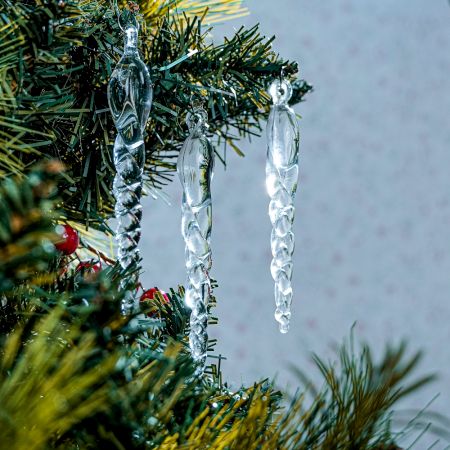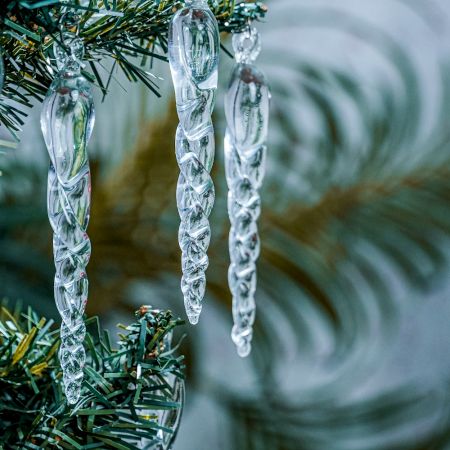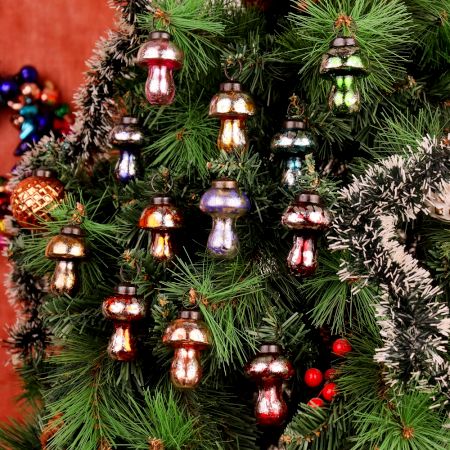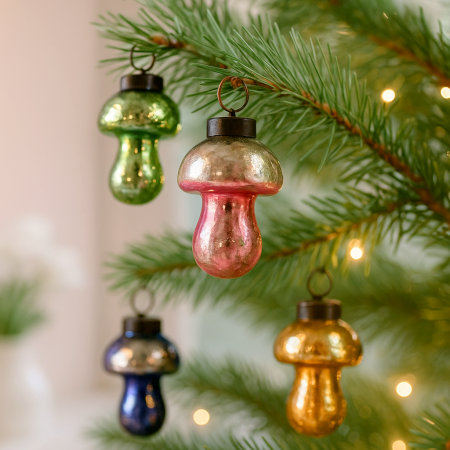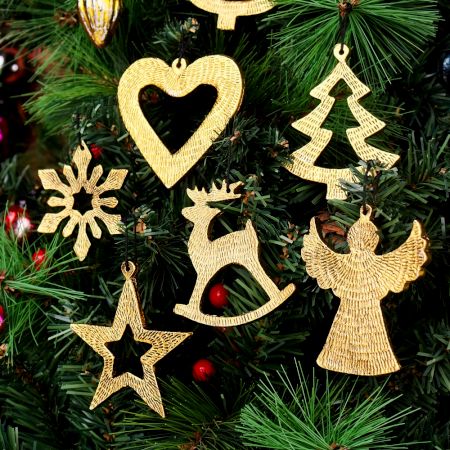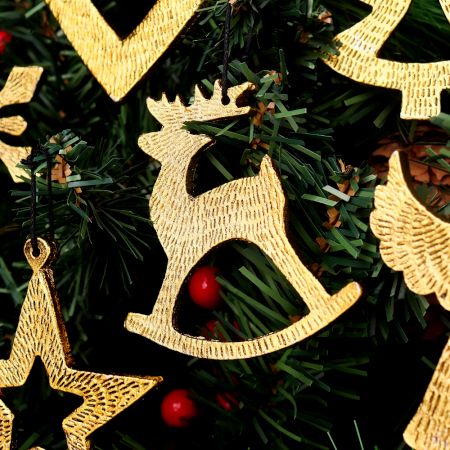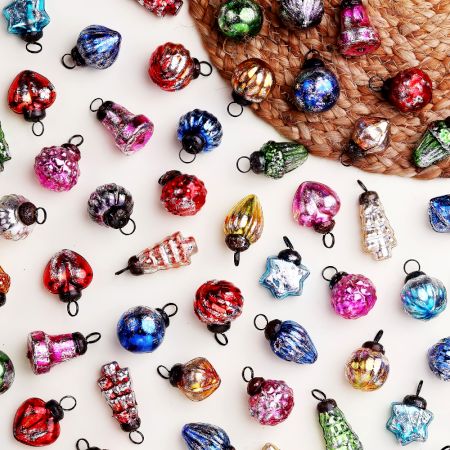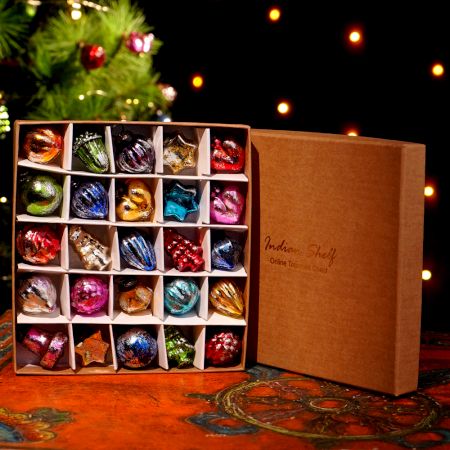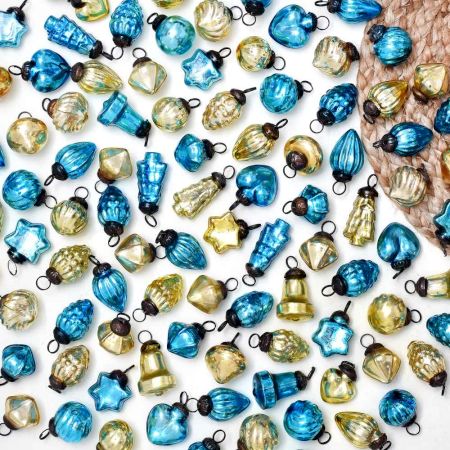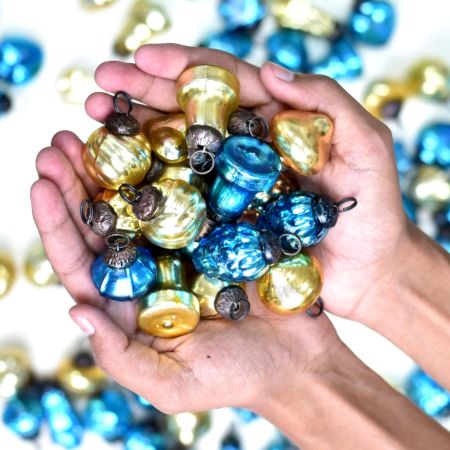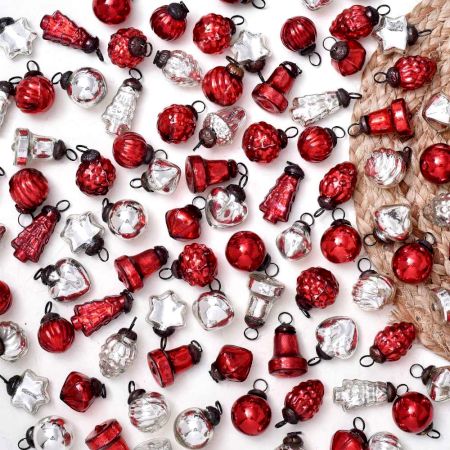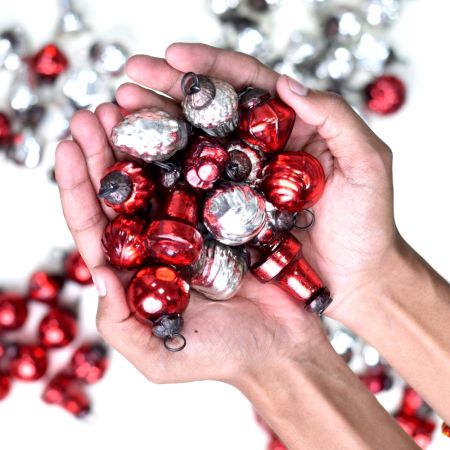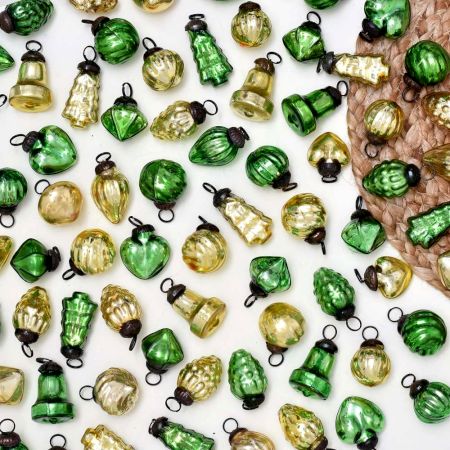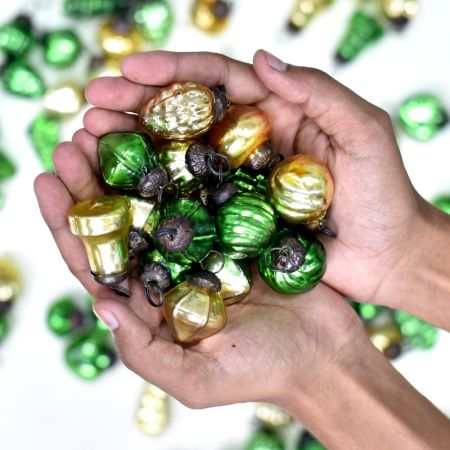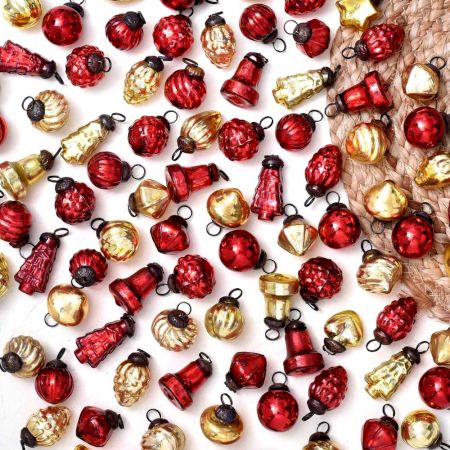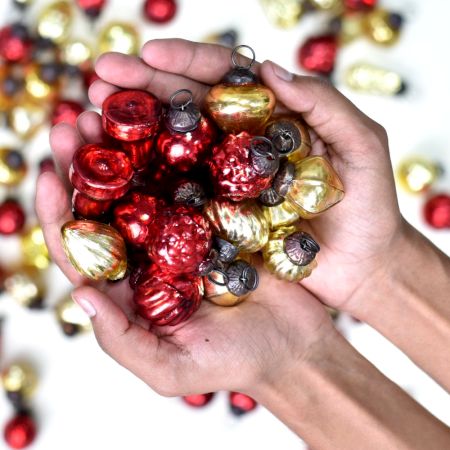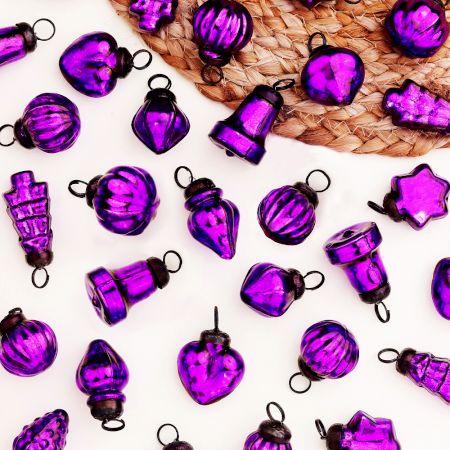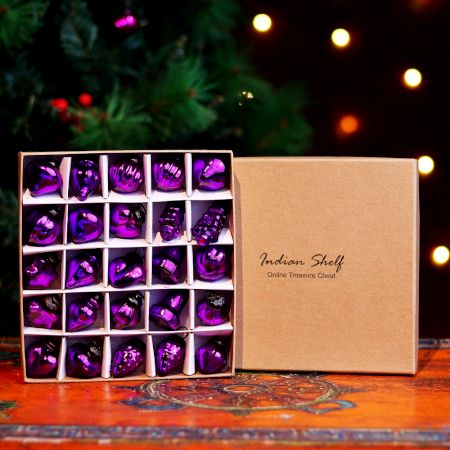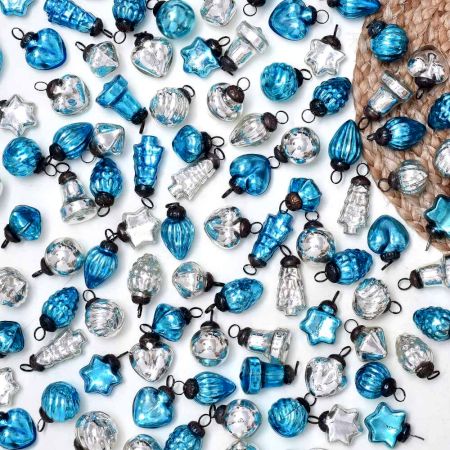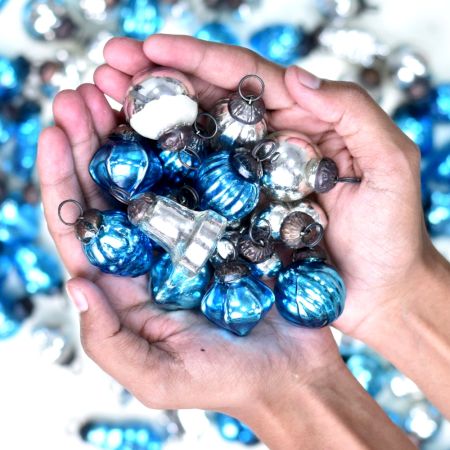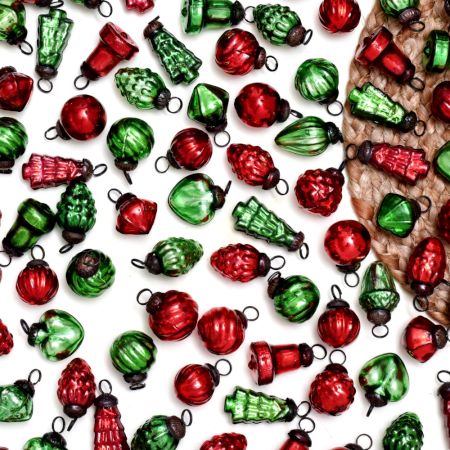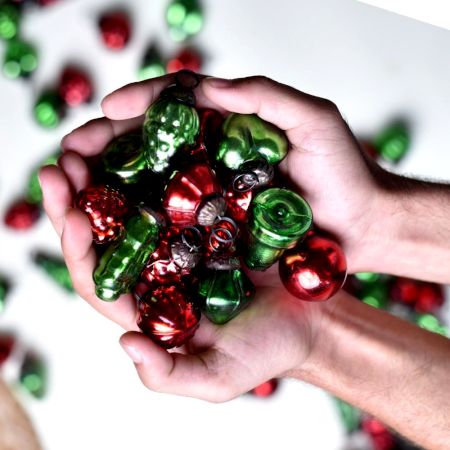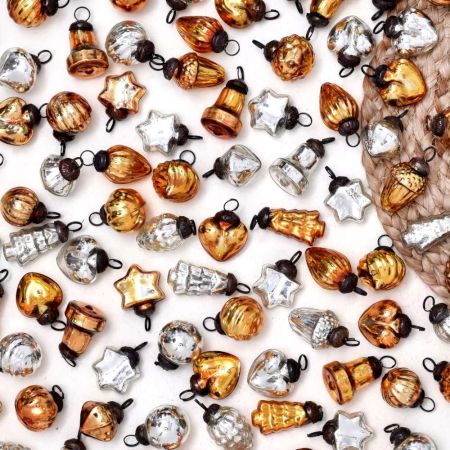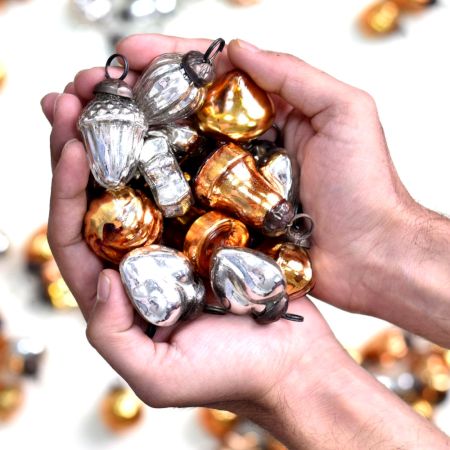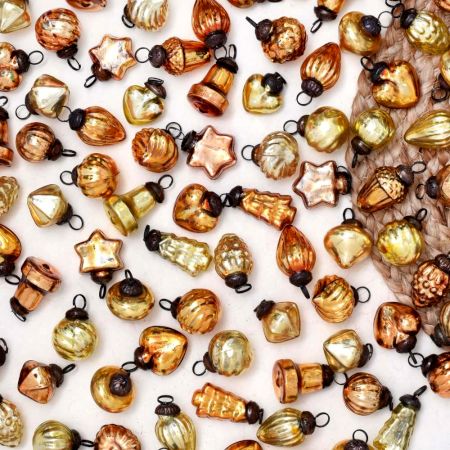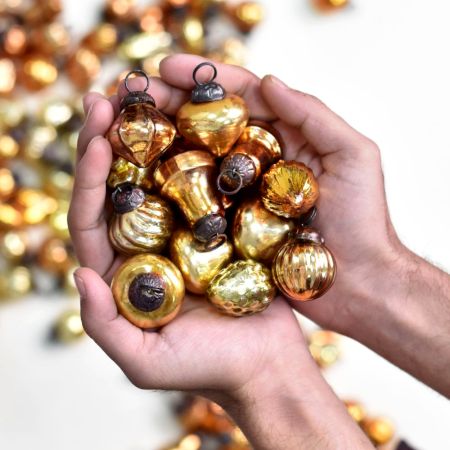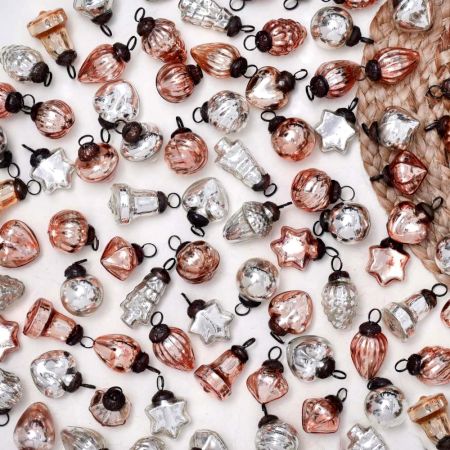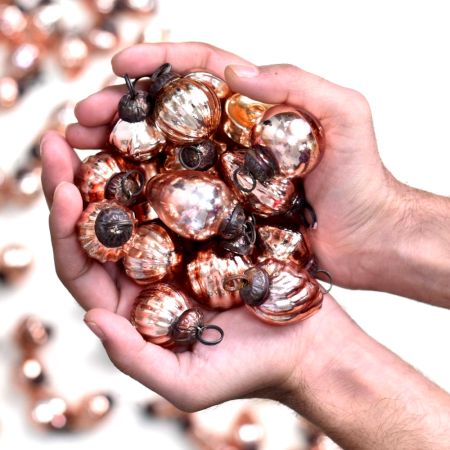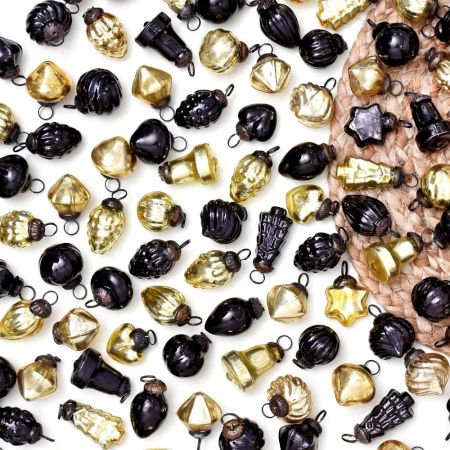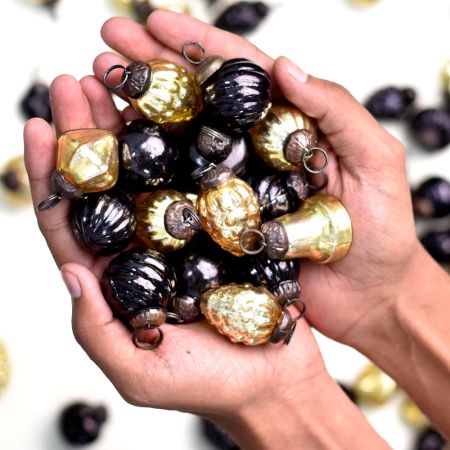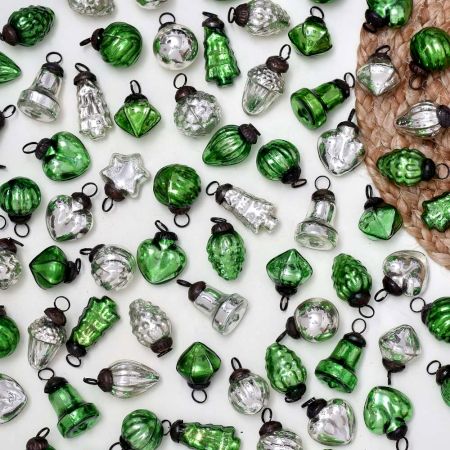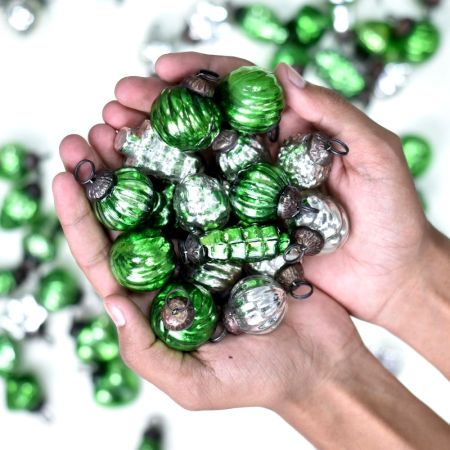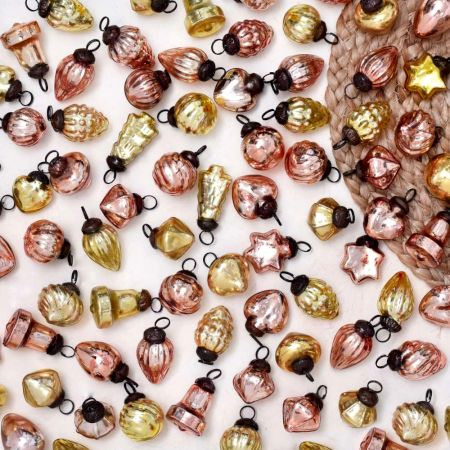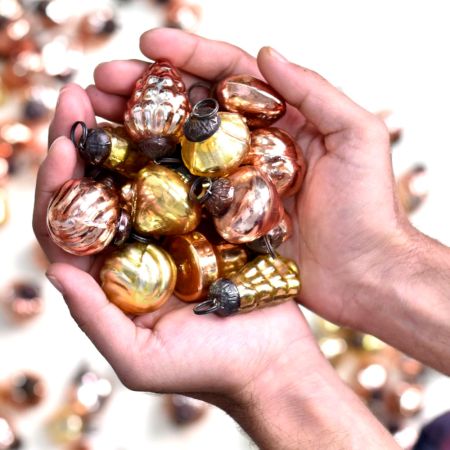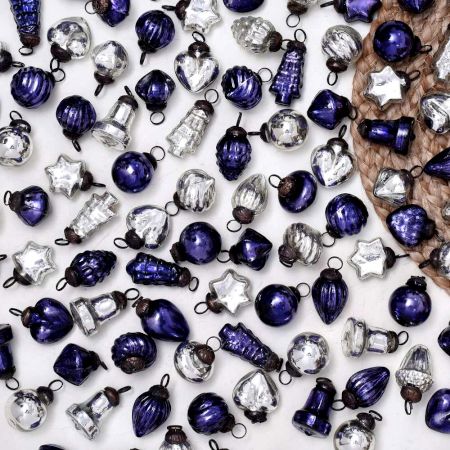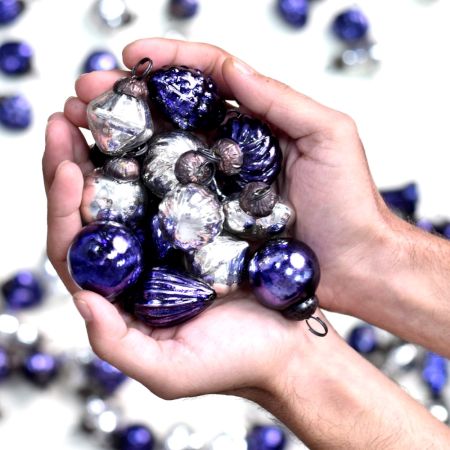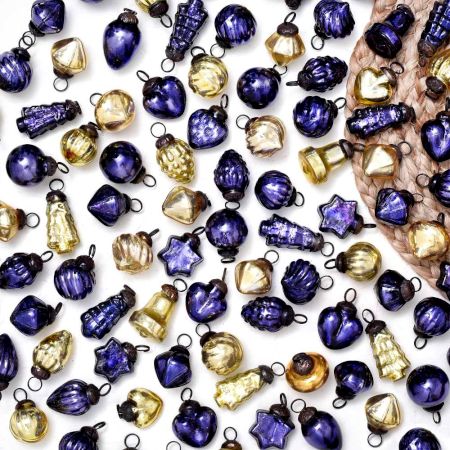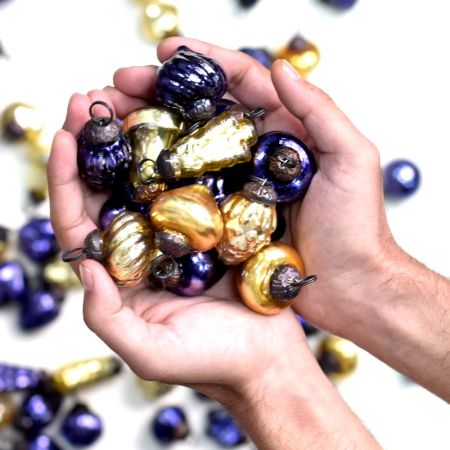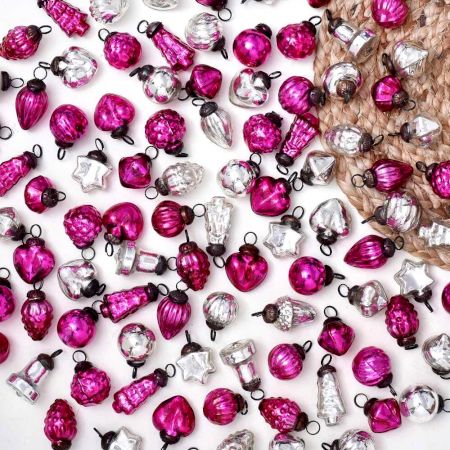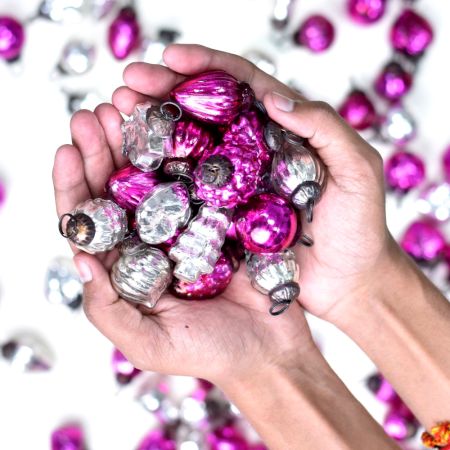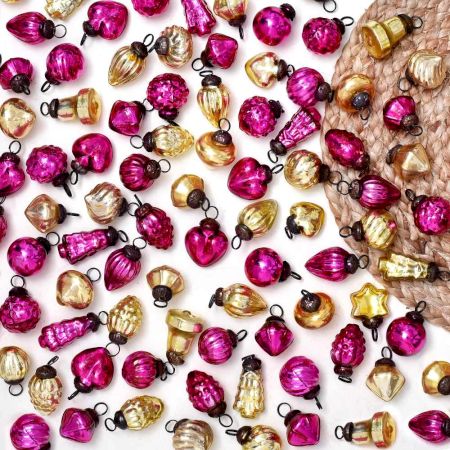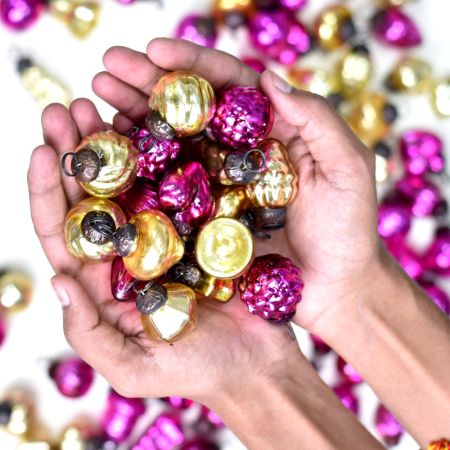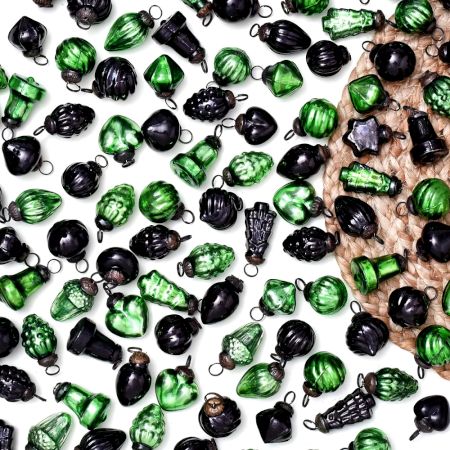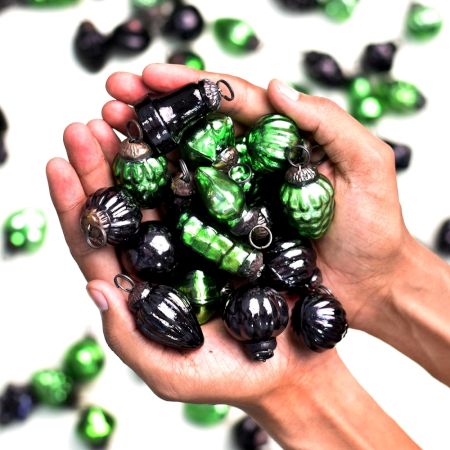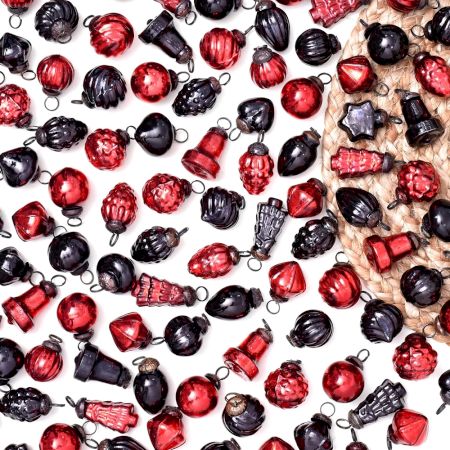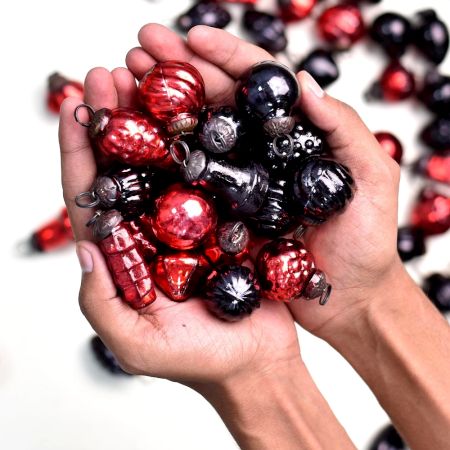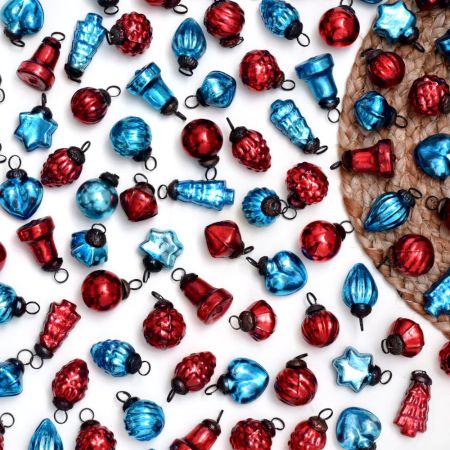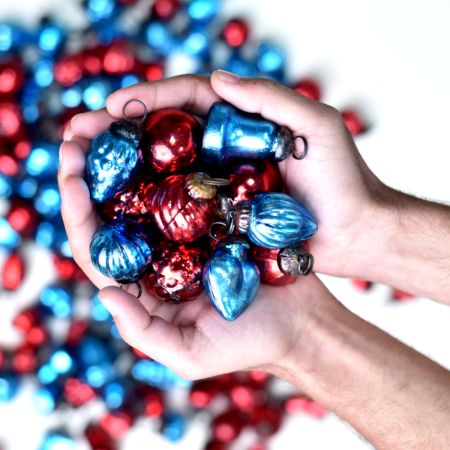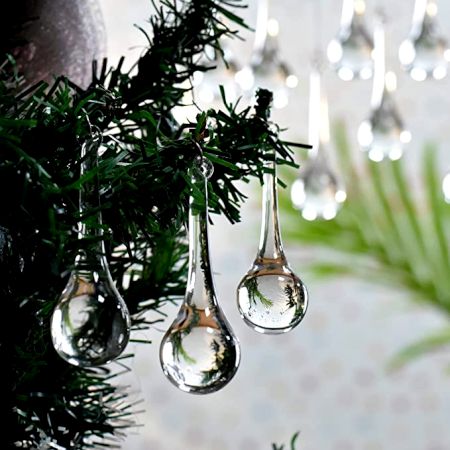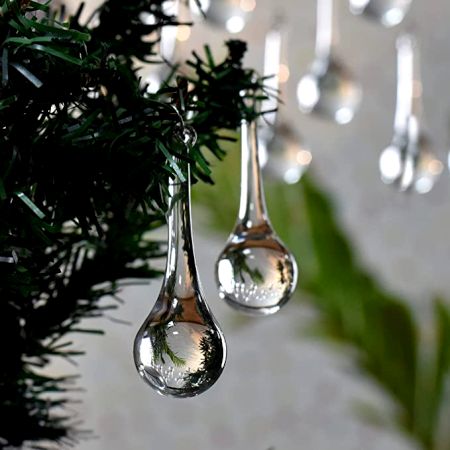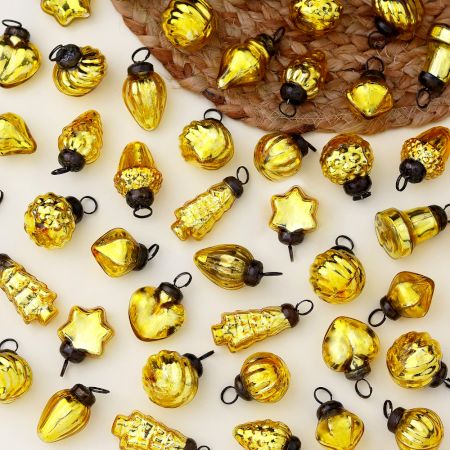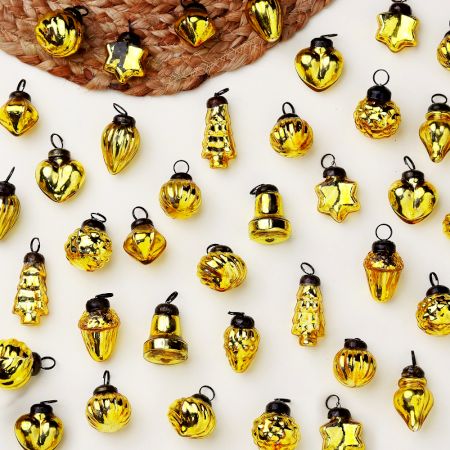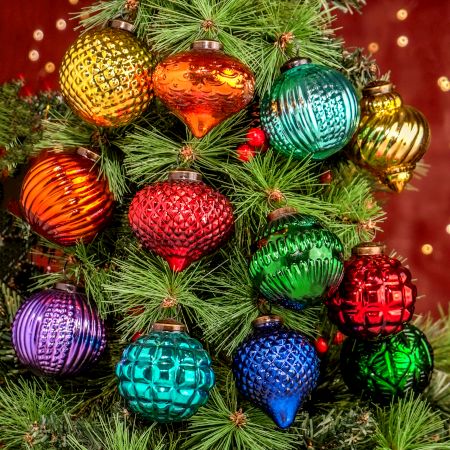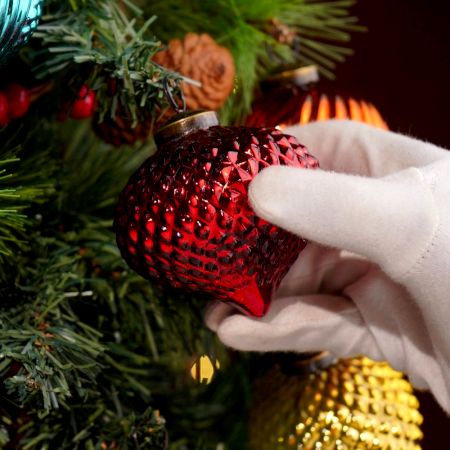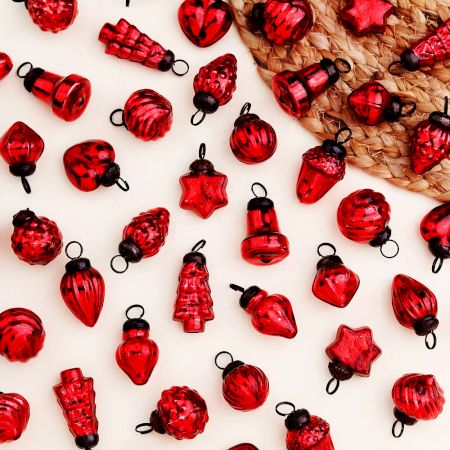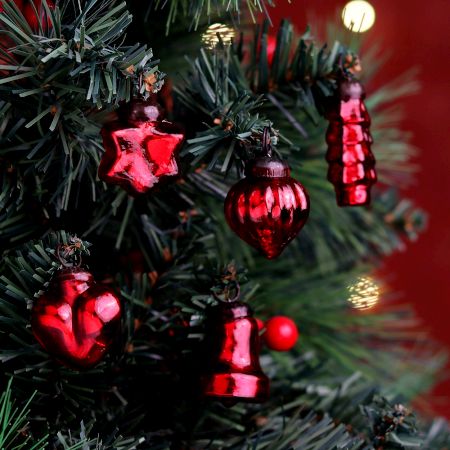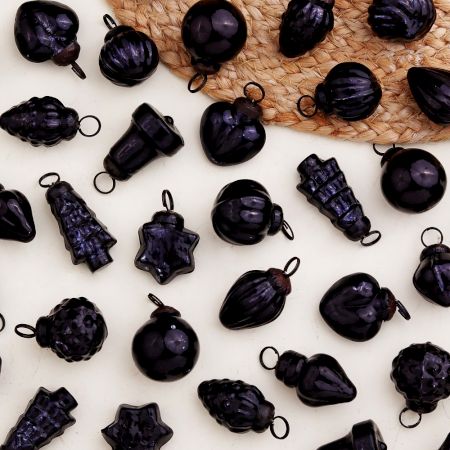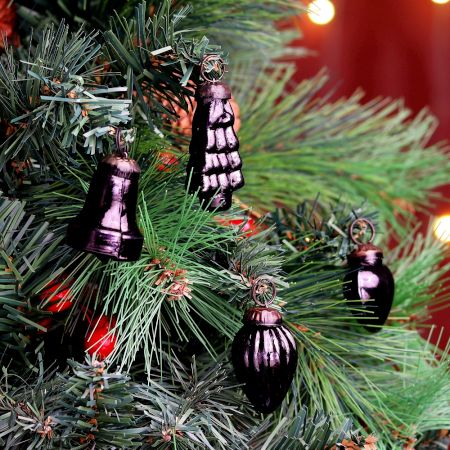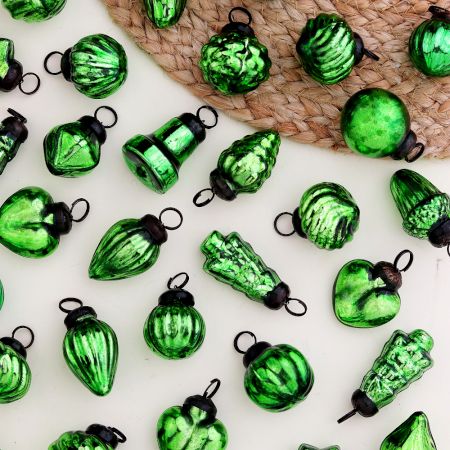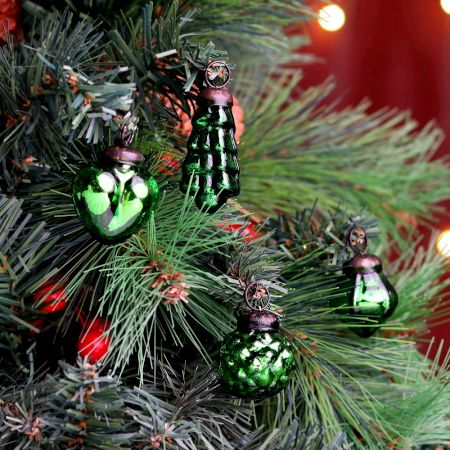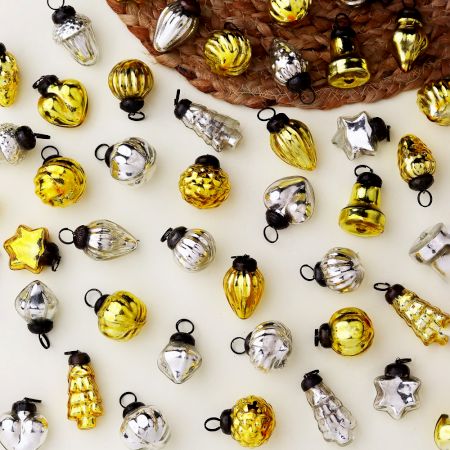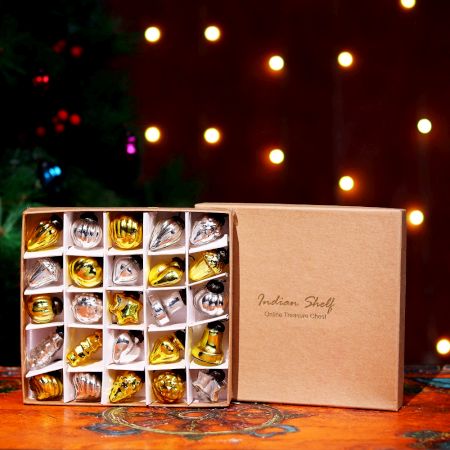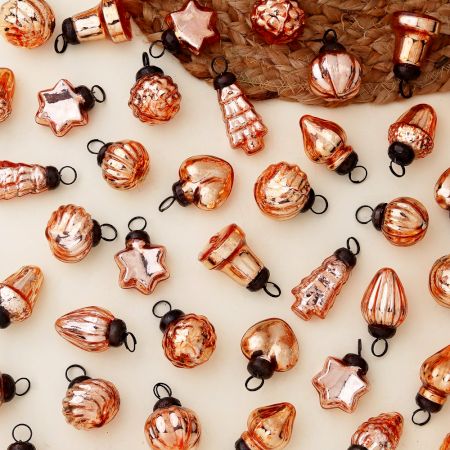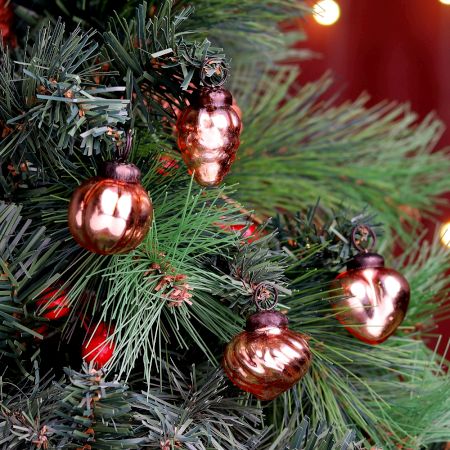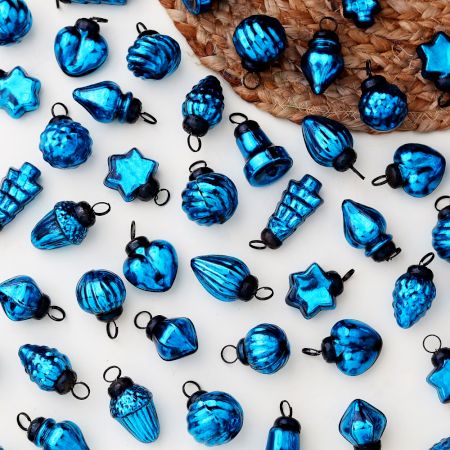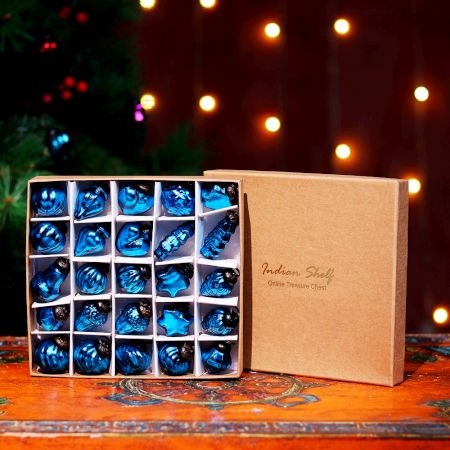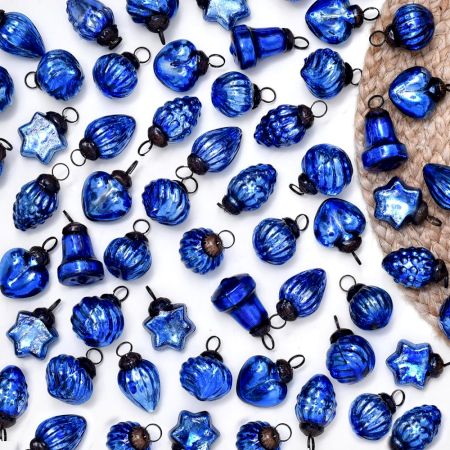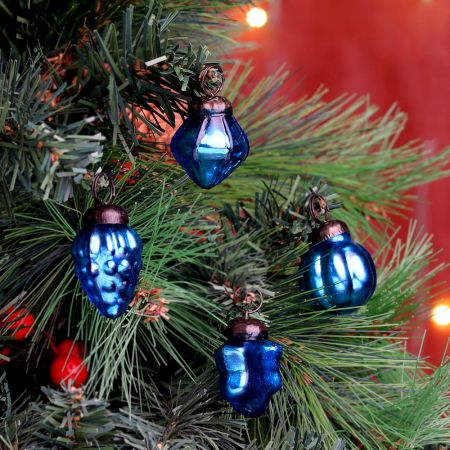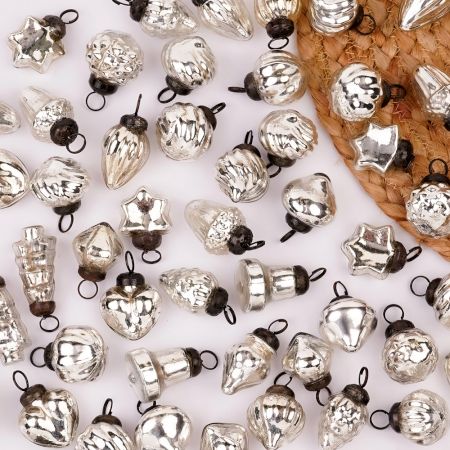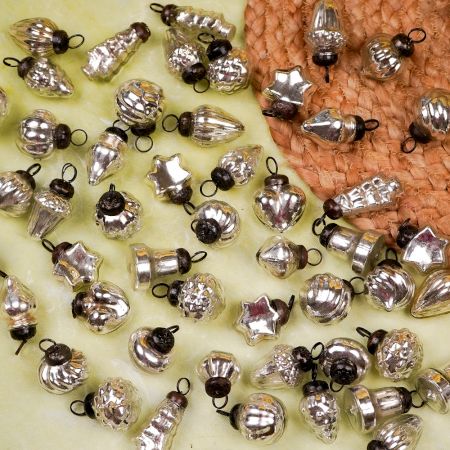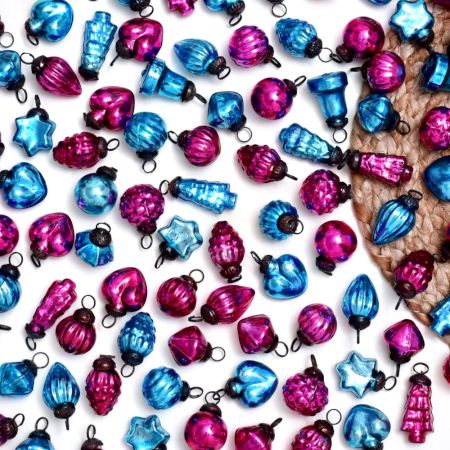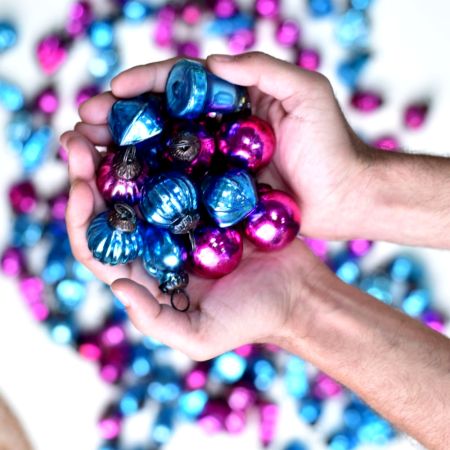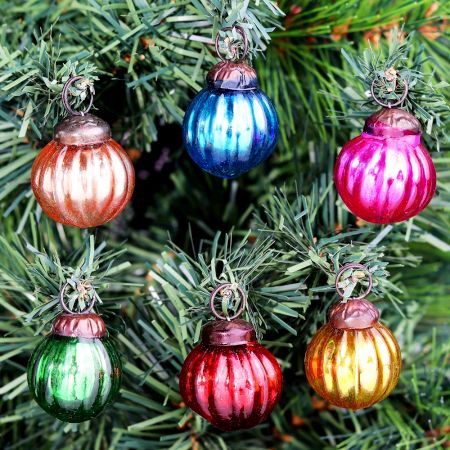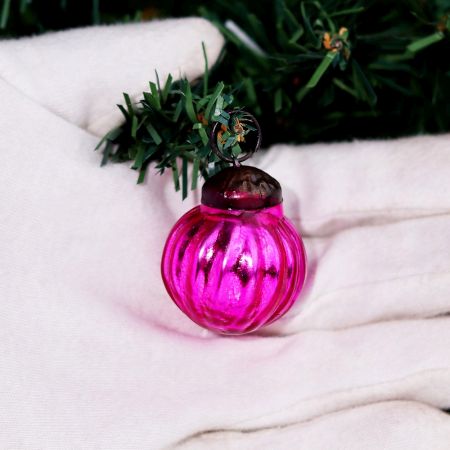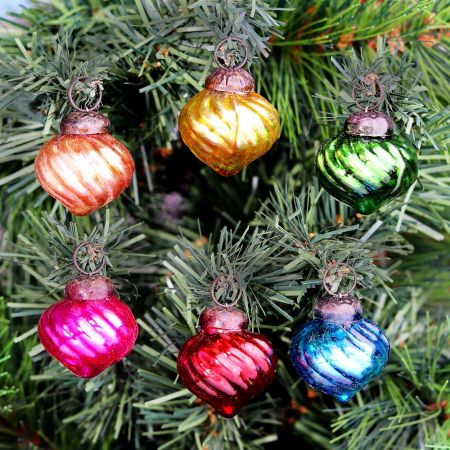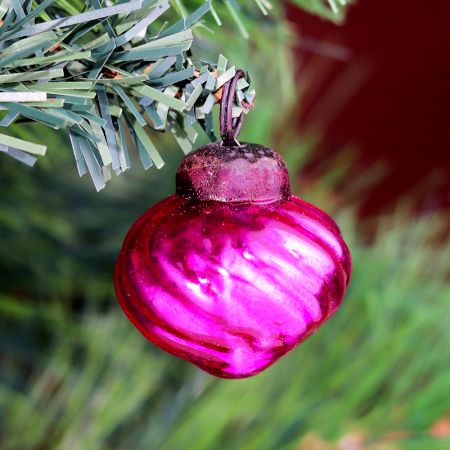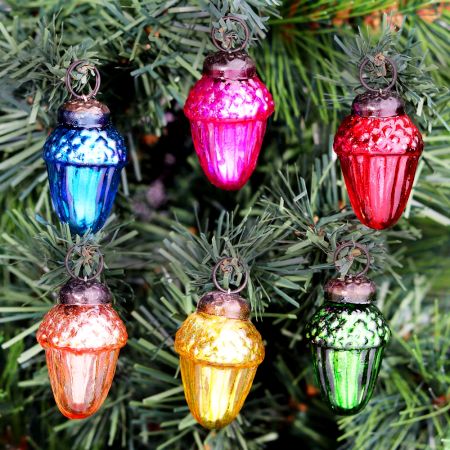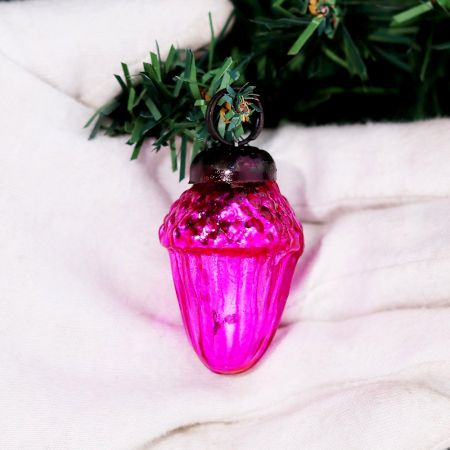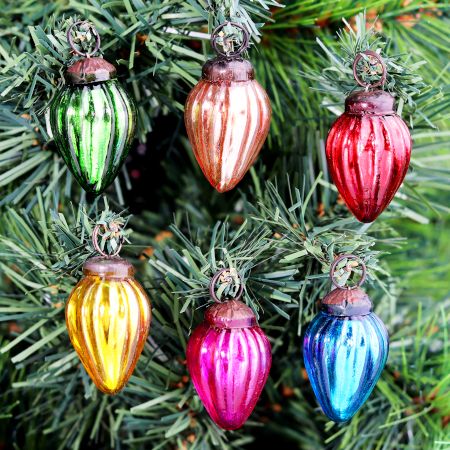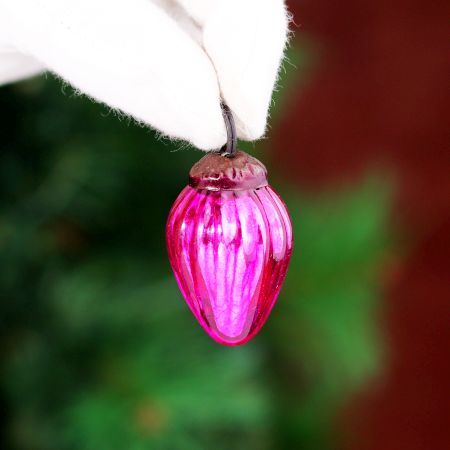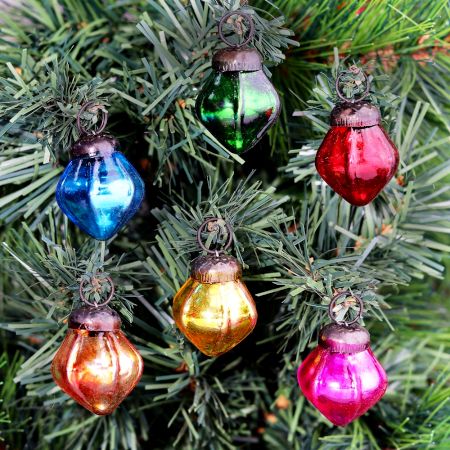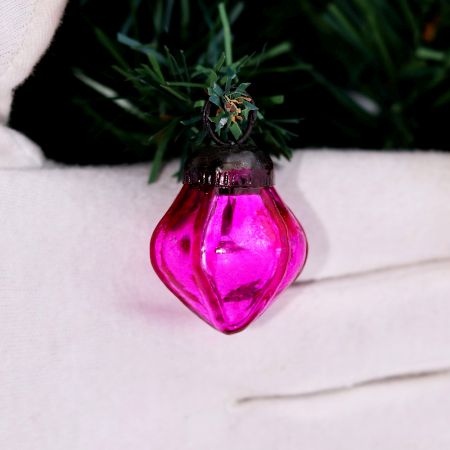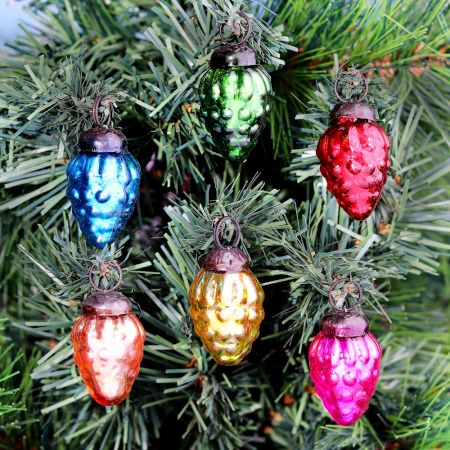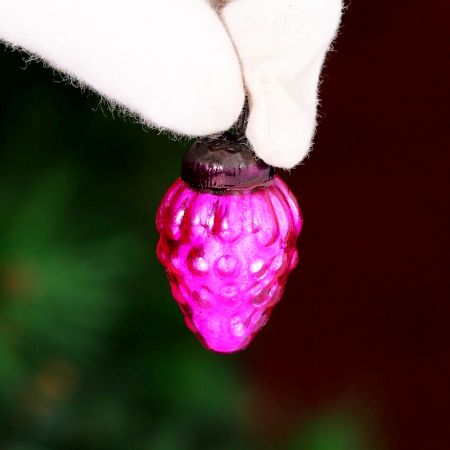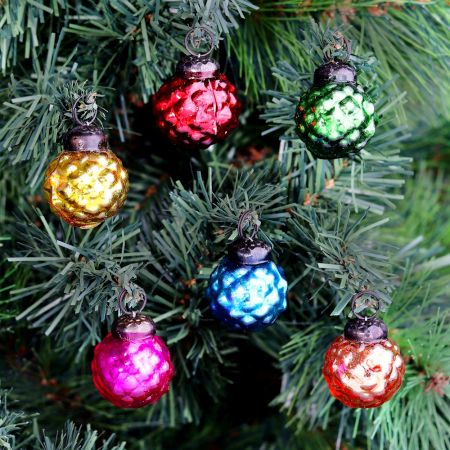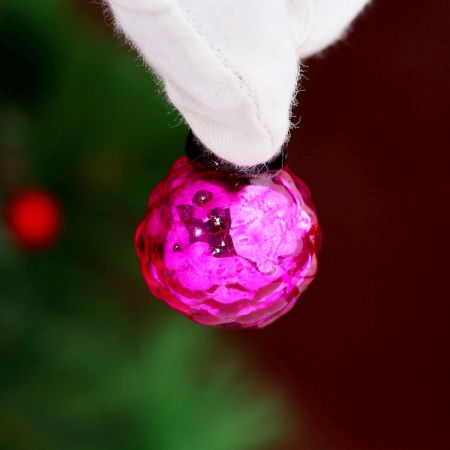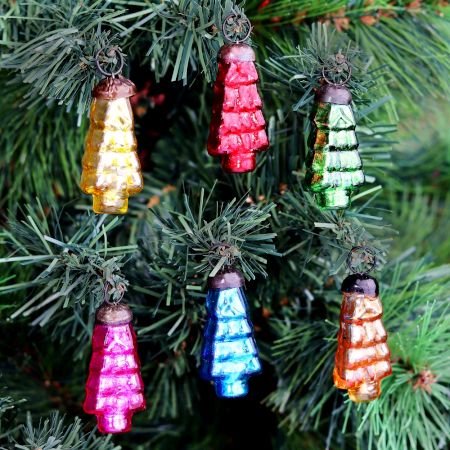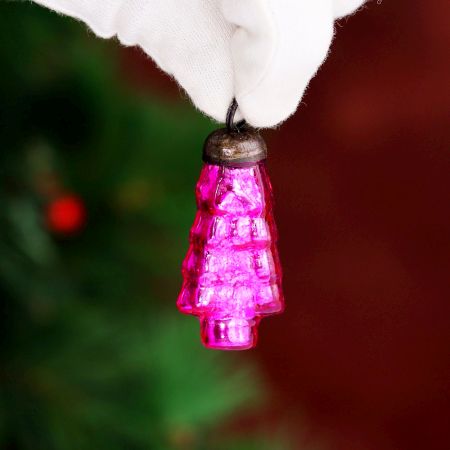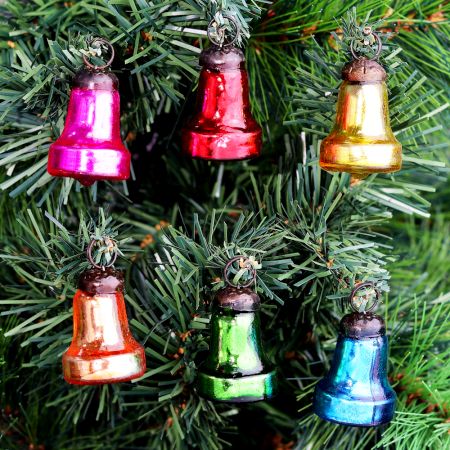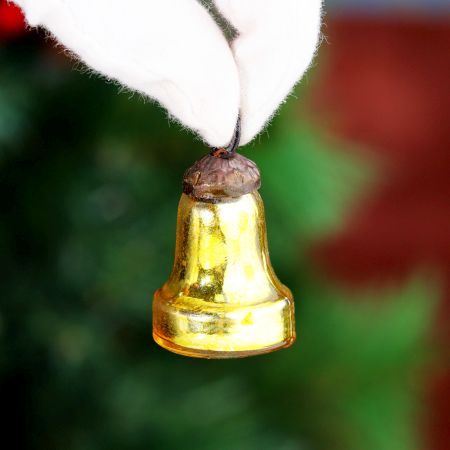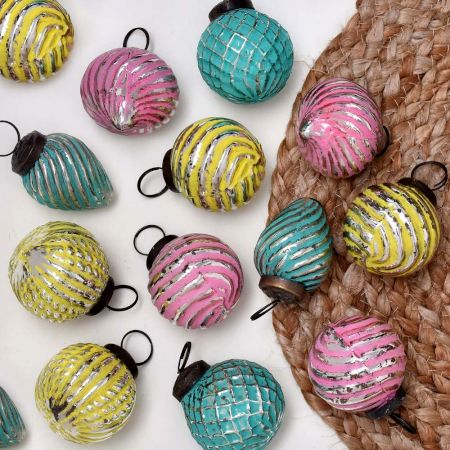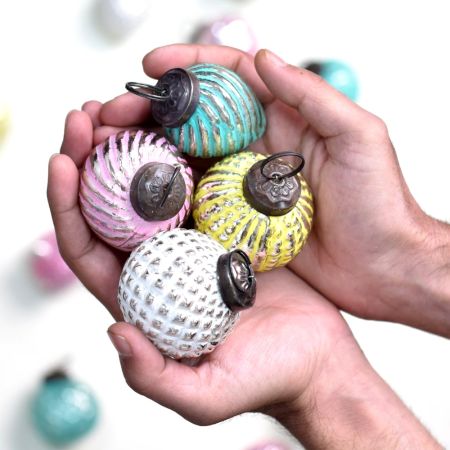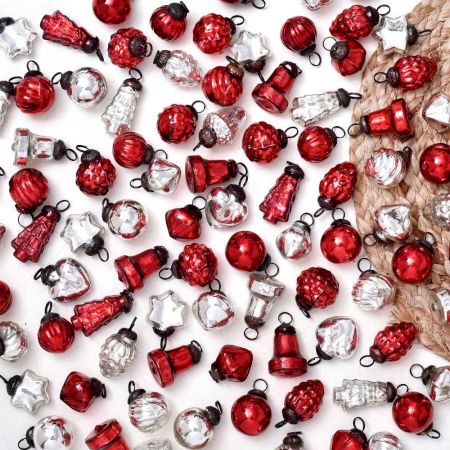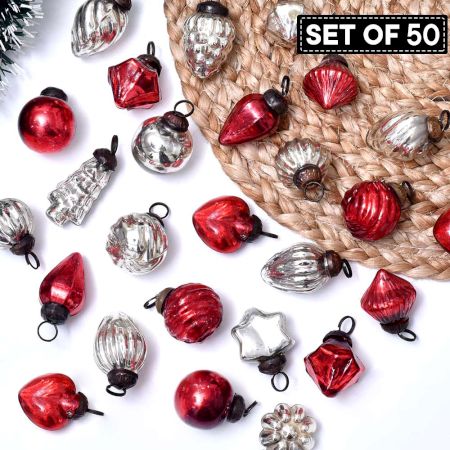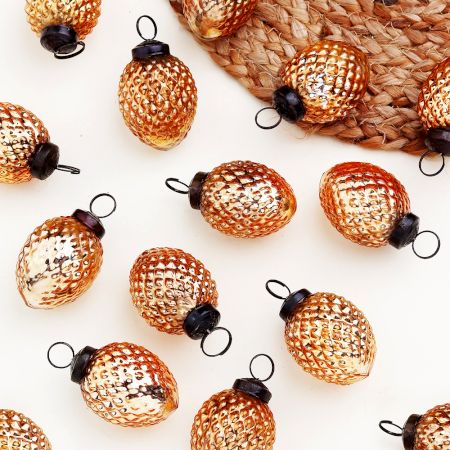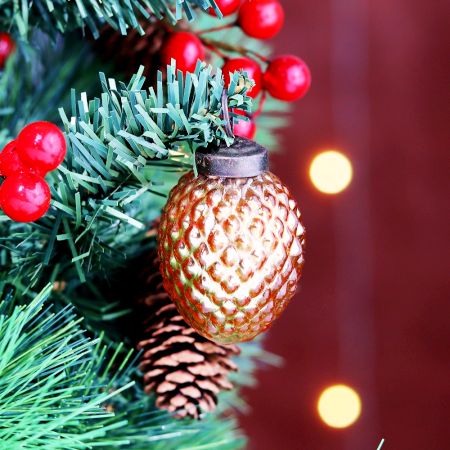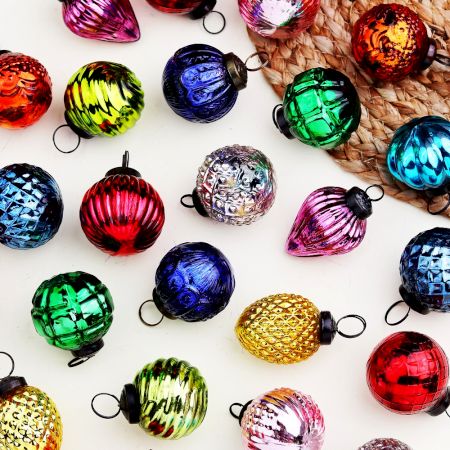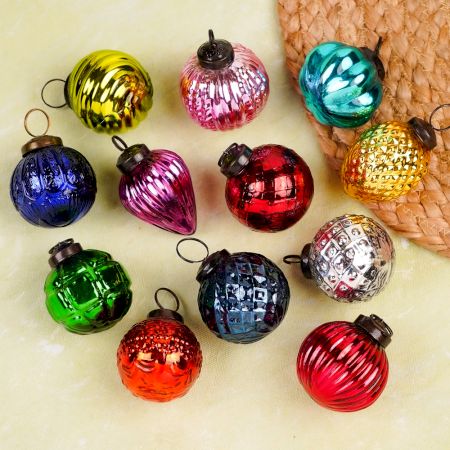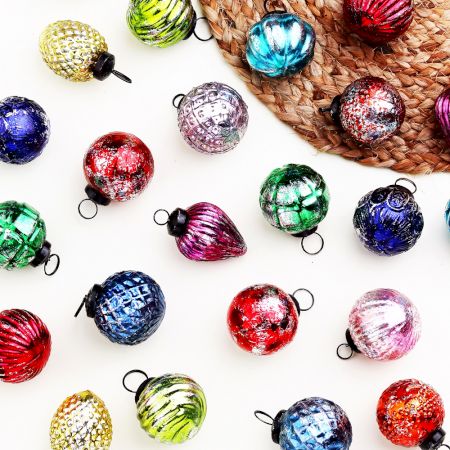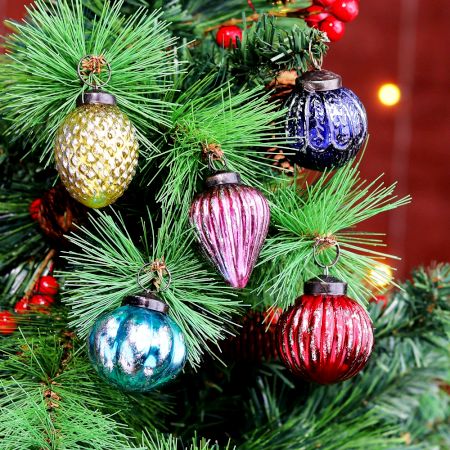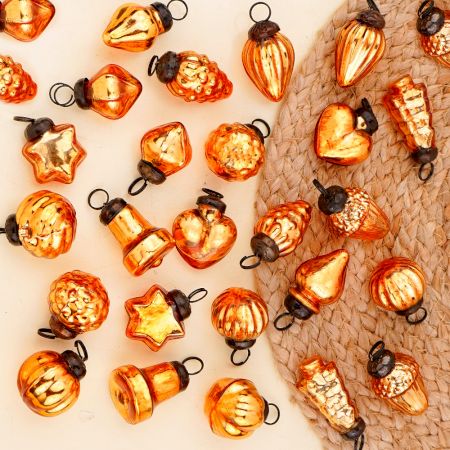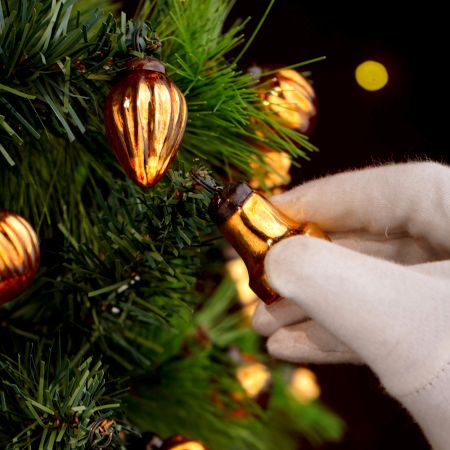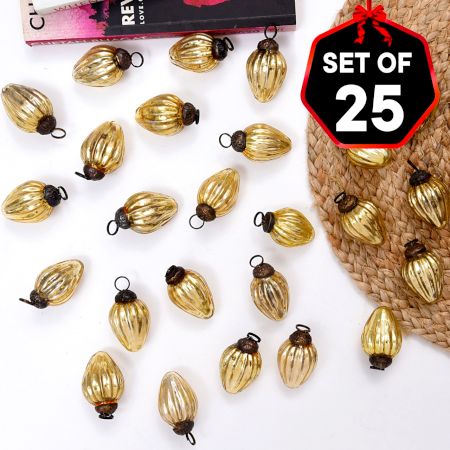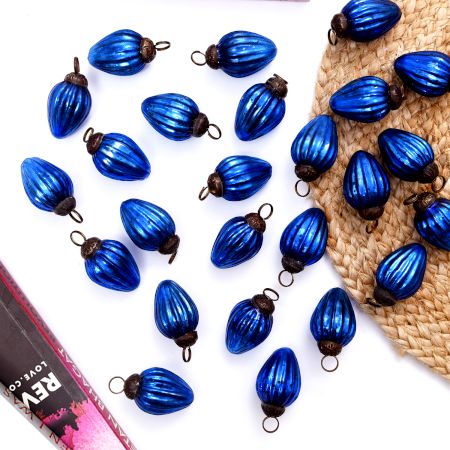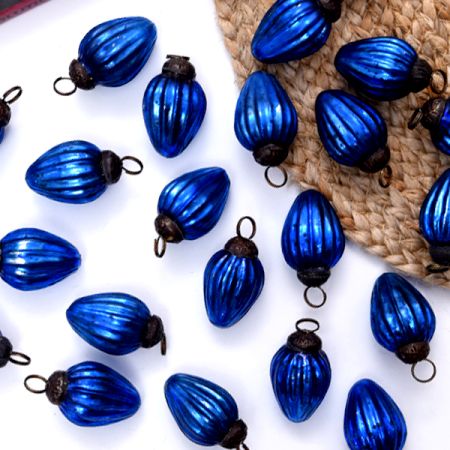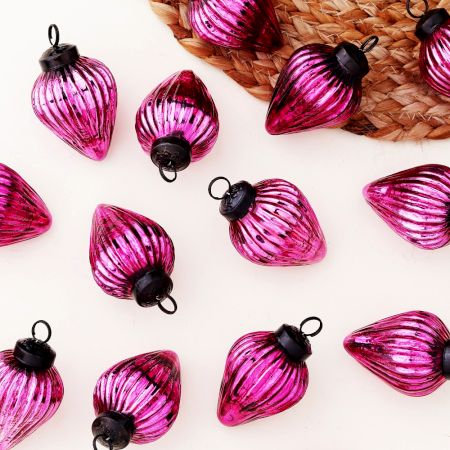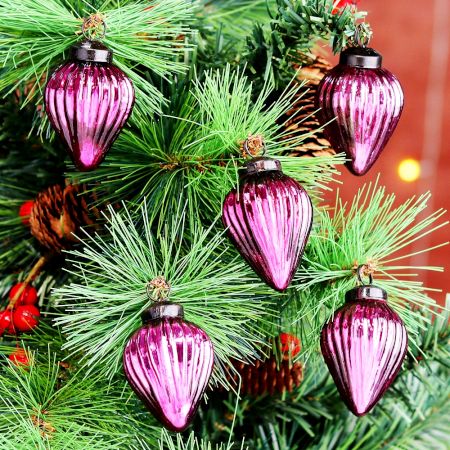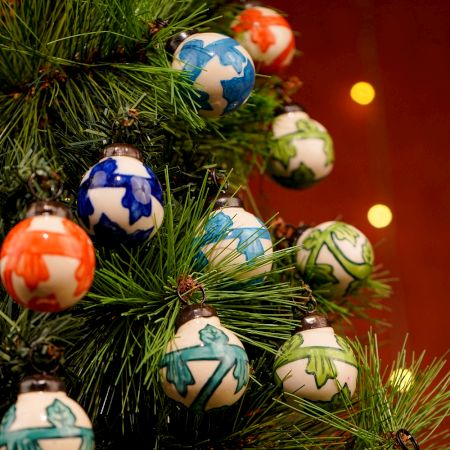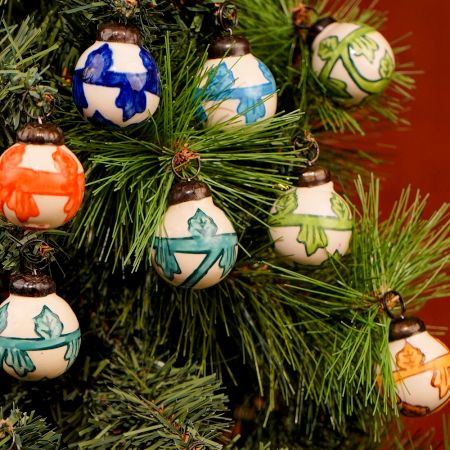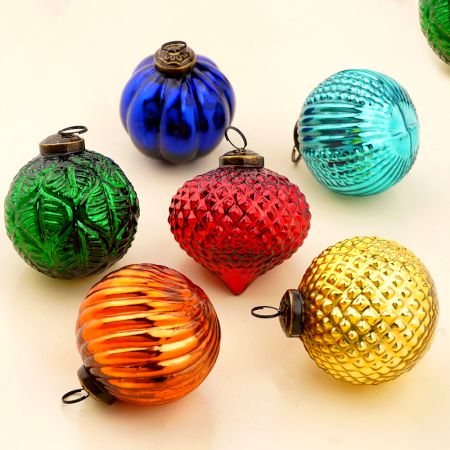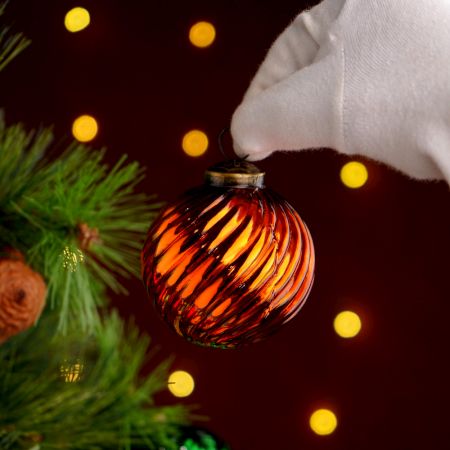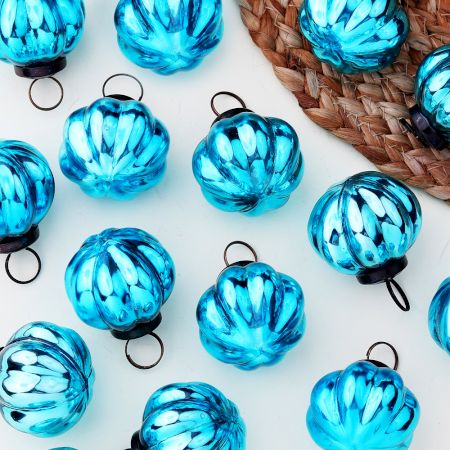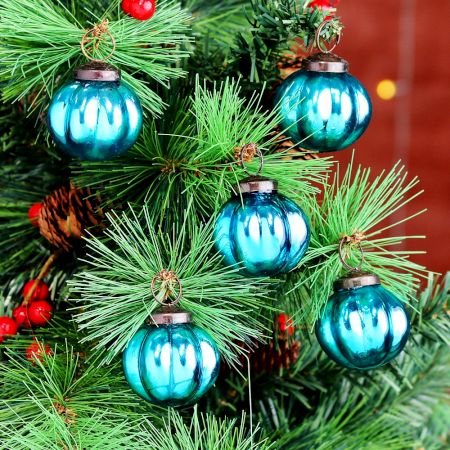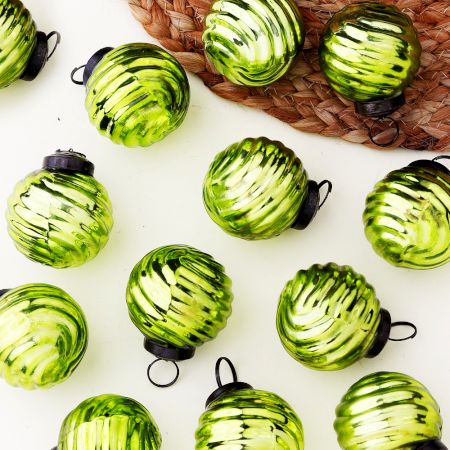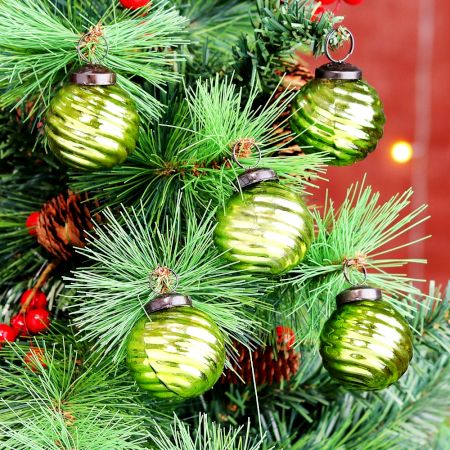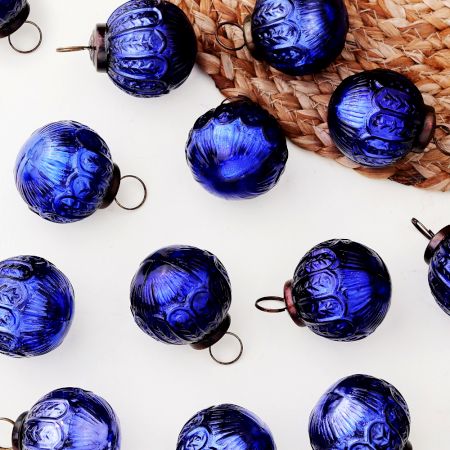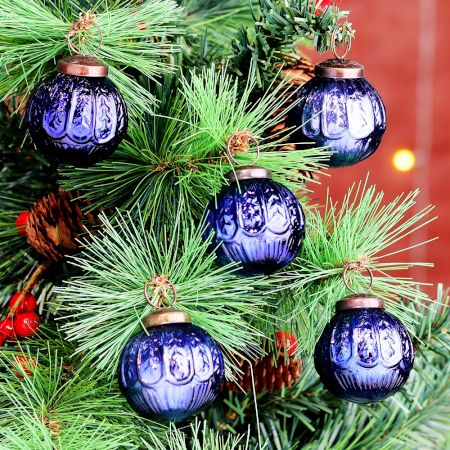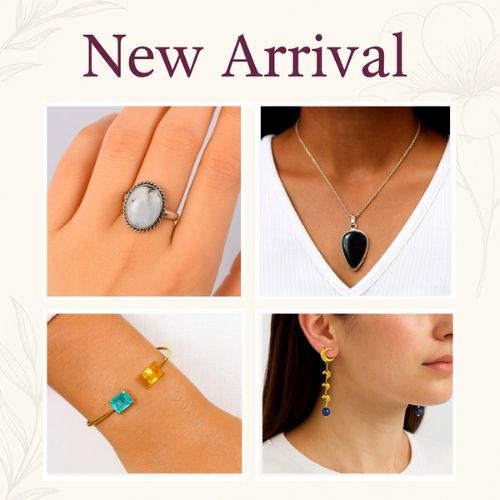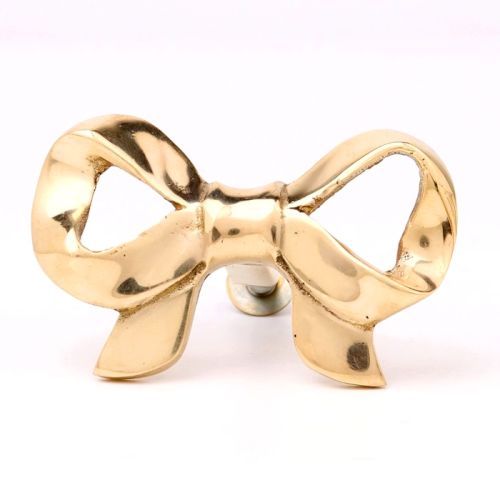-
20 Pieces Clear Glass Icicle Ornaments – Elegant Christmas Tree Hanging Decorations
- ₹ 900.00
-
Selling fast
-
12 Pieces Vintage Distressed Glass Hanging Ornaments – Multicolor Christmas Tree De...
- ₹ 799.00
-
Only a few left
-
12 Pieces Handmade Multicolor Vintage-Style Glass Mushroom Christmas Tree Ornaments
- ₹ 799.00
-
Only a few left
-
Set of 25 Pieces Red and Golden Tiny Christmas Ornaments In Assorted Styles
- ₹ 799.00
-
Only a few left
-
25 Pieces Green and Red Ornaments For Tree Decoration - Glass Christmas Ornaments
- ₹ 799.00
-
Only a few left
-
25 Pieces Amber and Silver Ornaments For Tree Decoration - Glass Christmas Ornaments
- ₹ 799.00
-
Only a few left
-
25 Pieces Amber and Gold Christmas Ornaments - Vintage Golden Christmas Tree Ornament...
- ₹ 799.00
-
Only a few left
-
25 Pieces Rose Gold and Silver Ornaments For Tree Decoration - Glass Christmas Orname...
- ₹ 799.00
-
Only a few left
-
25 Pieces Rose Gold and Gold Christmas Ornaments - Vintage Golden Christmas Tree Orna...
- ₹ 799.00
-
Only a few left
-
25 Pieces Purple and Silver Ornaments For Tree Decoration - Glass Christmas Ornaments
- ₹ 799.00
-
Only a few left
-
25 Pieces Purple and Gold Christmas Ornaments - Vintage Golden Christmas Tree Ornamen...
- ₹ 799.00
-
Only a few left
-
Set of 50 Pieces Red and Silver Tiny Christmas Ornaments In Assorted Styles
- ₹ 1,450.00
-
Only a few left
Shop Unique Christmas Ornaments | Tree Decorations & Holiday Gifts
General Understanding of Christmas Ornaments
Christmas ornaments have always carried more than mere decoration, they embody the poetry of festivity. Whether it’s a fragile glass bauble glimmering under candlelight or a handmade trinket crafted with care, each ornament turns an ordinary space into a landscape of memory. Their origins trace back to the 16th century when Europeans first hung fruits, nuts, and paper figures on evergreens. Over time, artistry evolved, and ornaments became reflections of faith, love, and creativity. In today’s homes, they connect generations, merging nostalgia with design. Every glint on the tree whispers an inherited emotion, quiet, shared, and profoundly human.
What Are Christmas Ornaments?
They are small artistic tokens that speak a universal visual language of joy. A Christmas ornament is not just an accessory, it is a seasonal storyteller. Crafted from materials like glass, wood, or fabric, each piece captures a fragment of festive emotion. A shimmering glass bell may echo church chimes, a wooden reindeer might recall Nordic winters. People collect them as family legacies or personal expressions of taste. Some prefer the opulence of gold and silver tones, while others lean toward rustic simplicity. Beyond beauty, their true purpose lies in their ability to evoke belonging. They decorate trees, mantlepieces, and even doorways, turning every corner into a symbol of warmth. The reader seeks meaning here, not just design, but sentiment, artistry, and connection.
What Emotions Or Themes Do Christmas Ornaments Commonly Represent?
The emotional current running through Christmas ornaments is deep and layered. They mirror tenderness, faith, and unity. Red berries carved into glass hint at courage and life, while white doves represent peace and divine grace. For many, unwrapping these ornaments every year is a ritual, one that recalls laughter around a fire, the scent of pine, and the hum of familiar songs. Themes vary across cultures, in India, handmade fabric stars speak of brightness amid winter, while in Europe, angels signify hope. Every ornament becomes a vessel of memory, echoing the universal desire to hold onto fleeting moments. They remind us that beauty, when tied to emotion, becomes eternal.
What Are The Most Popular Styles In Christmas Ornaments?
The variety of Christmas ornaments today reflects how tradition evolves with taste. Glass ornaments remain timeless, delicate, luminous, and rich with vintage charm. Metal and ceramic pieces add durability and sophistication, often adorned with intricate patterns. Minimalist Scandinavian styles emphasize natural wood and soft hues, offering quiet elegance. In contrast, Victorian designs revel in grandeur, complete with lace and shimmering gold accents. Each region adds its own signature, Indian artisans hand-paint motifs inspired by folklore, while European craftsmen shape intricate figurines. Modern designs blend nostalgia and innovation, proving that even a small ornament can bridge eras.
We have indigenous varieties of Christmas ornaments available in different sizes, colours and materials. Their shine and glitter are worth their price and genuinely eye-catching. The other array is of the Paper Mache ornaments which are unique in their entire form.
Before further wasting time, now is the time to read the fantastic range of Christmas decor that we are offering:-
Paper Mache ornaments
Paper Mache ornaments serve as a perfect alternative to glass ornaments which are not only a little expensive but are also risky for the kids in the house. They are friendly in all means. Indianshelf offers beautiful designs of christmas decoration items like paper Mache ornaments, keeping in mind their handmade essence and originality. From stars to the half crescent moon, the models are intricate and mesmerising.
Christmas ornaments
You might quickly find Christmas decorations online in every other online website or any offline store. But I am sure there cannot be any particular shop or online company that can offer all the colours and designs of ornaments in all possible sizes! Now you don’t have to travel and waste your time and money searching for ornaments of different shapes and sizes because, on IndianShelf, you will find these Christmas ornaments in all possible formats! Let’s take a look at the various sizes we are offering.
Size 1 inches-2 inches
These are the smallest size available of the ornaments with a minimal price of Rs33. They come with an attached ribbon which can either be hung on the doors or windows or can be decorated on the Christmas tree.
Size 2 inches-3 inches
These small sized ornaments come in a set of six in different designs, shapes and colours.
Size 3 inches to 4 inches
These medium sized Christmas ornaments are available in heart and bell shapes that give a perfect look to your trees or fences. Because of their affordable size, they can be placed and decorated anywhere in the entire house.
Size 4 inches to 5 inches
These ethereal ornaments are a little higher in cost due to their increased size and variety. Their price ranges from 200 to 1000 Rs, depending on the choice of quality and colour. They can be placed on the window pane or the railings, thus giving a beautiful transformation to your house.
Size 6 inches to 7 inches
These ornaments are available both in a set of six or a single piece. Because of their size, they are available in 2 different sizes of round shaped balls and elongated bulbs. The beautiful amalgamation of colours is worth watching!! They will surely talk among your guests.
Why Are Christmas Ornaments Still Cherished Worldwide?
Their endurance lies in their ability to hold time still. Christmas ornaments are more than cultural artifacts, they are emotional anchors. Across continents, families unwrap the same fragile star or porcelain angel year after year, tracing the lineage of memory. They transcend religion and geography, becoming symbols of continuity. In Japan, glass ornaments represent purity, in Italy, handblown baubles embody craftsmanship. Each one holds a piece of personal or collective history. In an age of digital celebrations, their tactile presence feels grounding. They remind us that festivity is not about excess, it’s about cherishing what endures. That’s why, no matter how trends shift, the gleam of a Christmas ornament remains universal.
Craftsmanship, Materials & Decorative Techniques
Traditional ornament making is an art passed down through generations. Early German artisans pioneered glass blowing in the 1800s, creating translucent spheres that captured light like frozen breath. Woodcarvers followed, crafting angels and stars that bore marks of hand tools and time. In India and Eastern Europe, embroidered fabric ornaments emerged, combining threadwork and storytelling. The process required patience, melting glass, molding clay, painting by hand, or firing metal until it gleamed. Each ornament carried a maker’s touch, a signature invisible but felt. These techniques, though refined today, still echo heritage.
What Materials Are Commonly Used In Christmas Ornaments?
The choice of material defines both the mood and meaning of an ornament. Glass remains the classic favorite, admired for its ability to reflect candlelight and emotion alike. Metal ornaments bring strength and permanence, often shaped into bells or stars. Ceramic pieces, with their earthy tone, bridge art and nature. In eco-conscious homes, paper and clay have returned as sustainable alternatives, proving that tradition can coexist with responsibility. Fabrics such as felt and jute lend warmth to rustic decor. These materials, though diverse, share one purpose, to capture festivity in tangible form. Through them, culture finds both its beauty and conscience.
What Role Does Design Play In Festive Ornamentation?
Design is the soul of ornamentation. Every curve, color, or pattern tells a quiet story of where it comes from. A golden star may represent light guiding travelers, while a snowflake carved in glass recalls fleeting perfection. Artists blend geometry with emotion, ensuring that form and feeling remain inseparable. Cultural motifs enrich design language, paisleys from India, Nordic runes, or European filigree. The best ornaments balance simplicity and significance. They harmonize with tree lights, complement the home’s palette, and add subtle rhythm to festive space. Design, at its finest, doesn’t just decorate, it communicates the poetry of celebration.
Symbolism and Storytelling Through Christmas Ornaments
Every ornament carries a narrative stitched between memory and ritual. A red bell might recall a child’s laughter, a small angel could mark a loved one remembered. Historically, ornaments mirrored faith and folklore, apples symbolized life, stars reflected hope, and candles represented divine presence. Over time, storytelling expanded beyond religion. Families now commemorate travels, births, and anniversaries with personalized ornaments. They evolve into time capsules, whispering silent chapters of life. When readers look at their own collection, they don’t just see decoration, they see biography in miniature. The beauty of these stories lies not in grandeur but in emotional truth.
How Do Colors And Shapes Reflect The Holiday Spirit?
Colors and shapes form the language of Christmas. Red speaks of love and courage, green of endurance and life. Gold glows with prosperity, while silver shimmers with purity. Shapes too carry emotion, stars for guidance, hearts for affection, doves for peace. Across continents, variations exist but meanings remain harmonious. In Nordic homes, white ornaments evoke stillness, in tropical regions, bright hues express vibrancy. Together, these choices shape the mood of celebration. They turn simple spaces into sanctuaries of light. The reader finds here not mere design theory but the essence of visual emotion, how color and form translate joy into sight.
Buying, Collecting & Gifting Christmas Ornaments
Christmas ornaments are more than decorative pieces, they carry stories, evoke nostalgia, and mark the rhythm of festive tradition. Every ornament, whether glass blown or hand painted, holds a tale of craftsmanship and cultural memory. In India, families often pass down ornaments through generations, each year adding one more piece to the tree, forming a visual diary of celebrations. The act of buying or collecting them becomes a ritual of connection between maker, buyer, and memory. Their charm lies not just in sparkle but in sentiment, in how they turn simple spaces into timeless keepsakes glowing with emotion and artistry.
Where Can You Find Authentic Or Unique Christmas Ornaments?
Authentic ornaments often emerge from small artisan hubs, craft villages, or curated online decor platforms that value handmade precision. While mainstream stores offer variety, local markets in cities like Jaipur, Pondicherry, or Goa offer the unexpected, terracotta angels, hand carved wooden bells, or glass stars painted with folk motifs. European inspired Christmas bazaars in urban spaces also showcase intricate collectible ornaments. Online decor brands like IndianShelf curate collections blending Indian aesthetics with global Christmas spirit, where one can find Venetian style baubles or silver coated stars. The best finds usually balance craftsmanship with individuality, each piece slightly imperfect, touched by a human hand. That imperfection becomes the ornament’s signature, carrying the warmth of authenticity in a world flooded by replication.
How Do You Identify High Quality Ornaments?
High quality ornaments reveal themselves in the details, clean finishes, balanced weight, smooth edges, and color tones that neither peel nor fade. Materials like glass, brass, ceramic, and treated wood age gracefully, unlike plastic that dulls over time. A well made ornament feels substantial, not fragile, the paintwork should align with the design, not bleed into it. The real test comes with light, how it reflects or diffuses across the surface tells you if it’s crafted or mass produced. Skilled artisans often sign or tag their work, and this trace of identity distinguishes the genuine from the generic. Over years, these pieces mature like heirlooms, gathering sentiment while maintaining their structural grace.
Why Do Christmas Ornaments Make Meaningful Gifts?
Gifting ornaments is an intimate gesture, small yet deeply personal. They carry emotional resonance, marking milestones like first homes, newborns, or friendships that endure seasons. In many cultures, gifting an ornament is akin to gifting a blessing, a wish for light, continuity, and shared joy. A glass snowflake can signify purity, a star guidance, a heart love enduring winter’s chill. Each ornament becomes part of someone’s yearly ritual, rediscovered when the boxes reopen each December. It’s less about the object and more about the sentiment embedded within, a reminder that beauty can also be quiet, thoughtful, and enduring.
Care, Storage & Longevity of Christmas Ornaments
Caring for ornaments is like preserving fragments of time. Their fragility demands patience, soft handling, gentle cleaning, and mindful storage. Over years, good care transforms them from festive accessories to inherited treasures. Storing them isn’t merely about space but about memory management, each wrapped piece waiting for its return to light. Whether hand blown glass or embroidered fabric, the key lies in respect for material and craft. The joy of rediscovery each season comes from this quiet act of preservation, where tradition meets tenderness and nostalgia finds a home in every box.
How Should You Store Christmas Ornaments Safely?
The safest way to store ornaments is by cushioning them individually. Soft cotton, tissue paper, or felt pouches prevent scratches, while sturdy boxes with dividers ensure they don’t collide. Humidity control matters, dampness dulls metallic finishes and weakens adhesive layers. Labeling each box makes next year’s decorating effortless, saving both time and emotion. Avoid storing them in attics or basements prone to temperature swings. For delicate glass or crystal pieces, acid free wrapping materials preserve clarity and prevent yellowing. Treating storage as ritual care ensures the same sparkle returns each festive season, untouched by time, unchanged by neglect.
Can Delicate Ornaments Be Restored?
Yes, skilled restorers can bring old ornaments back to life. Glass chips can be smoothed, tarnished metal polished, and faded paint gently revived with matching pigments. For vintage ornaments, restoration often requires balancing repair with authenticity, preserving patina without erasing history. Specialized artisans in major cities and some online restoration services offer this craft. However, sentimental ornaments demand restraint, sometimes a small crack or faded hue tells its own story. Restoration should revive spirit, not erase memory. The goal is to make them glow again, aged but alive, much like the traditions they embody.
What Are Common Damages Christmas Ornaments Face?
Most damages occur due to mishandling or exposure. Fragile ornaments often crack under pressure or from falls. Prolonged sunlight fades painted layers, and moisture corrodes metallic or mirrored surfaces. In tropical climates, even temperature shifts can cause micro fractures. Storage near sharp objects or heavy decor worsens breakage risks. Occasionally, old glue weakens and attachments loosen. Preventing such damage is simpler than repair, patience during unpacking, gentle wiping post season, and avoiding plastic wraps that trap humidity. A little care each year ensures longevity, transforming fragile ornaments into enduring symbols of celebration.
Styling & Home Decor With Christmas Ornaments
Decorating with ornaments is storytelling through space. Each placement, on a tree, garland, or table, creates rhythm and depth. They capture not just the essence of Christmas but the personality of the home. Mixing old ornaments with new ones adds emotional texture, like blending memory with modernity. Their shine balances warmth and wonder, creating an atmosphere that feels both festive and familiar. Beyond trees, they hang over mirrors, shimmer across dining tables, or rest in glass bowls, each a spark of curated joy that connects the physical space to the season’s spirit.
How Can Ornaments Transform Your Festive Decor?
Ornaments act as emotional amplifiers of the festive spirit. They scatter light, reflect color, and weave harmony into every corner. A simple green pine turns poetic with baubles of gold and crimson. Handmade paper stars or brass angels add cultural fusion to traditional decor. They shift energy, what was a room becomes a celebration. Every ornament you place alters tone and texture, creating visual rhythm. Whether it’s a single elegant tree or a small window arrangement, ornaments bridge emotion and design, transforming living spaces into warm, inviting worlds of light and memory.
Which Home Styles Pair Best With Christmas Ornaments?
Different interiors interpret ornaments differently. Classic homes thrive on glass globes and gold garlands, while rustic spaces glow with wooden reindeer, fabric bells, and earthen hues. Minimalist apartments embrace monochrome metallics and geometric shapes for subtle elegance. Indian homes blend traditional diyas with Christmas baubles, creating a cross cultural harmony of light. The trick lies in coherence, letting the ornaments echo the home’s natural rhythm. A well chosen ornament complements the furniture, tone, and light source. The beauty of Christmas decor lies in this adaptability, it can whisper sophistication or sing joy, depending on the setting.
How Do You Choose Ornaments For Different Spaces?
Each room carries its own mood. Living rooms welcome grandeur, metallic spheres, bold reds, and reflective surfaces that catch conversation and candlelight. Bedrooms invite serenity, soft whites, transparent glass, and faint shimmer keep intimacy intact. Hallways and children’s rooms thrive on playful charm, felt reindeer, colorful ribbons, bells that jingle softly. The choice should mirror both function and emotion of space. Balance large ornaments with smaller accents, ensuring visual flow. Decorating this way becomes less about placement and more about harmony, letting each space breathe its version of Christmas warmth.
Cultural Influence & Timeless Appeal of Christmas Ornaments
Christmas ornaments embody the soul of celebration. Beyond their glitter lies a lineage of art, ritual, and cultural expression that transcends continents. What began as humble symbols of harvest and gratitude evolved into keepsakes of identity and faith. Over centuries, they absorbed the textures of each culture they touched, merging craftsmanship with storytelling. Today, a single ornament can carry echoes of many traditions, from blown glass in Europe to brass bells in India. They remind us that decoration is not just beauty but continuity, a silent dialogue between generations who find meaning in shared ritual and light.
What Is The Historical Significance Of Christmas Ornaments?
The story of ornaments begins in 16th century Germany, where families decorated trees with apples, nuts, and candles to celebrate abundance. These early symbols carried both religious and seasonal meaning, representing gratitude and renewal. By the 1800s, German glassmakers in Lauscha began crafting delicate baubles, turning folk ritual into fine art. Their designs spread across Europe and eventually to America, where ornaments became markers of taste, memory, and status. The evolution from fruit to glass and later to metal and fabric reveals how culture shapes even the smallest details of festivity. Today, each ornament, however modern, carries an echo of that origin, a quiet reminder of craftsmanship and continuity.
How Have Cultures Shaped Ornament Traditions?
Every culture infuses its ornaments with identity. In Poland, intricate glass baubles shimmer with pastoral imagery and winter folklore. Scandinavian designs favor minimalism, carved wood and straw stars that celebrate simplicity and nature. In India, ornamentation embraces opulence, brass bells, embroidered stars, and mirror work that merge Christmas with regional craft. Japan and the Philippines bring paper artistry into festive spaces, transforming delicate folds into luminous symbols of hope. Each variation expresses local aesthetics yet aligns with a universal desire for light and beauty. The global exchange of design has turned ornaments into ambassadors of cultural storytelling, merging local roots with global celebration.
Why Do Christmas Ornaments Remain Timeless?
Their timelessness lies in their humanity. They bridge generations through memory, each year reawakening joy and reflection. The act of decorating becomes ritualistic, linking the present moment with those who came before. Materials change, trends shift, but the sentiment stays constant, a search for warmth, belonging, and beauty amid winter’s stillness. Ornaments endure because they carry emotion in form, memory in color, and tradition in touch. Whether handcrafted or heirloom, they are not just decor but symbols of hope renewed annually. Their magic lies in their simplicity, in how they turn repetition into ritual and nostalgia into art.
Christmas Ornaments vs Other Holiday Decor
While most festive decor enhances atmosphere, ornaments narrate emotion. They belong to the quieter moments of celebration, inviting memory rather than spectacle. Garlands, wreaths, and lights set the stage, but ornaments embody the story. They personalize celebration, transforming shared spaces into reflections of individual histories. Each one speaks, whether through shimmer or silence. Unlike temporary embellishments, ornaments build continuity. They do not just decorate a room but curate its spirit, linking artistry with intimacy. Their difference lies in their voice, in how they whisper memory into the noise of celebration.
How Are Christmas Ornaments Different From Other Festive Decorations?
Most festive decorations serve as ambiance enhancers, but ornaments transcend that role. They hold personal narratives, childhood gifts, travels, first homes, farewells. Lights and garlands illuminate space, yet ornaments illuminate memory. Their craftsmanship carries emotion, their placement carries intention. A single ornament can shift a tree’s mood, balancing design with sentiment. They are also tactile experiences, often handmade, their textures telling stories of artistry. Unlike uniform decor, each ornament stands alone yet belongs to a collective memory. That individuality, rooted in both art and affection, gives them emotional depth unmatched by any other festive adornment.
What Makes Ornaments More Memorable Than Seasonal Decor Items?
Their endurance makes them unforgettable. Each ornament is rediscovered, not replaced. The same piece reappears year after year, aged by time but rich with new meaning. Unlike disposable seasonal decor, ornaments invite participation and preservation. They evolve with the family’s story, gaining sentimental weight through repetition. Some carry initials, others fragments of a child’s first craft. Their material may be fragile, but their symbolism grows sturdier with age. Over time, they become markers of life’s quiet continuity, turning seasonal decor into personal heritage, and reminding us that beauty remembered is more powerful than beauty newly bought.
Emotional & Sentimental Value of Christmas Ornaments
Every ornament is a vessel of emotion, a miniature time capsule. Beyond their aesthetic charm, they preserve laughter, loss, reunion, and celebration. To unpack them each year is to revisit moments long past, to touch the tangible proof of joy. They convert memory into material, nostalgia into art. Unlike photographs or mementos, ornaments exist in movement and ritual, they are displayed, handled, and shared. Their sentimental power lies not in extravagance but in familiarity. They become silent witnesses to a family’s changing seasons, carrying love across time without ever needing to speak.
Can Christmas Ornaments Become Family Heirlooms?
Yes, and often they do without intention. The glass bauble from a grandparent’s tree, the wooden angel from a childhood fair, or the hand painted star bought during a family trip, each finds permanence through memory. With every season, their emotional worth deepens. Families often store them carefully, labeling boxes like memory archives. When passed on, they carry not just tradition but sentiment, blending nostalgia with continuity. In many homes, these ornaments outlast changing trends, connecting generations through shared rituals. An heirloom ornament becomes more than decor, it becomes a bridge, linking stories of love and togetherness across decades.
Why Do People Feel Deeply Attached To Their Ornaments?
Because each ornament is both object and emotion. It might recall a year of joy or survival, a moment of love or loss. The act of hanging them revives those memories, frozen, yet alive. Unlike other possessions, ornaments hold presence only when revisited. They are companions of time, reappearing once a year to remind us who we were and what we cherished. Their attachment lies in repetition and ritual, where memory becomes physical through the gentle act of placement. People don’t just decorate trees, they reassemble their past in fragments of light and color, each ornament a quiet reflection of self.
Frequently Asked Questions (FAQs)
What Defines A Christmas Ornament?
A Christmas ornament is more than a decorative object. It is a symbol of celebration, memory, and artistry. Each piece holds a whisper of history, a fragment of emotion. Traditionally, ornaments adorned evergreens to mark winter’s triumph over darkness. Today, they bring shimmer to homes, symbolizing warmth and togetherness. Glass baubles, metal charms, handcrafted figures, and wood carvings all serve one purpose, to transform spaces into reflections of joy and nostalgia. Beyond visual beauty, ornaments act as quiet storytellers of culture and time, blending craftsmanship with sentiment to create something deeply human and enduring.
Can Traditional Ornaments Be Recreated Today?
Yes, and often with greater precision and emotional authenticity than before. Artisans around the world continue reviving old techniques, hand blown glass from Germany, papier mâché from India, tin cuttings from Mexico. These crafts preserve regional aesthetics while introducing subtle innovation in form and texture. Modern tools enhance detailing, yet the essence remains handmade. Such recreations bridge centuries, turning tradition into living art. They are not replicas for nostalgia’s sake but reinterpretations that honor origin and evolve style. The touch of human hands in each piece ensures authenticity. In recreating traditional ornaments, we preserve the spirit of festivity and craftsmanship that once illuminated village fairs and hearth lit homes.
How Do You Protect Ornaments From Moisture Or Dust?
Protection begins with respect for the material. Glass, metal, ceramic, or fabric ornaments each demand specific care. Storing them in airtight boxes prevents humidity damage. Silica gel absorbs hidden moisture, keeping the shine intact. Dust should be removed gently with a microfiber or soft muslin cloth. Avoid chemical cleaners, they strip patina and weaken paintwork. Wrapping each ornament individually, especially hand painted ones, prevents scratches. For antique or fragile pieces, cotton padding or acid free paper ensures longevity. The ritual of careful storage becomes part of the ornament’s story. Preserving them means safeguarding not just decoration but memory, artistry, and emotional heritage.
Are Christmas Ornaments Still Popular In Modern Homes?
Yes, though the aesthetics have evolved. Contemporary homes embrace minimalist and thematic decor, yet ornaments remain central to festive design. What changes is the narrative, sleek metallic tones replace the multicolor chaos of earlier times, while handcrafted pieces bring individuality. Technology adds new layers, with LED lit ornaments or 3D printed designs coexisting beside heirloom glass baubles. The enduring charm lies in emotion. Every household, whether urban apartment or countryside villa, retains the ritual of decorating, of placing one meaningful piece last. Modern life may change traditions, but the urge to beautify and belong ensures ornaments never fade from festive memory.
Can Ornament Designs Be Customized?
Yes, customization transforms ornaments into personal relics. Names engraved on silver, photos printed on glass, or children’s handprints turned into keepsakes, these gestures weave emotion into form. Brands and local artisans now offer bespoke designs that reflect personalities, milestones, or themes. A newlywed couple might hang their initials, while families commemorate loved ones through memory ornaments. Customization democratizes design, making every tree a visual diary. It also connects artistry with intimacy, turning seasonal decor into enduring tokens of identity. In an age of mass production, personalized ornaments remind us that celebration thrives in detail, care, and human touch.
FAQ
To get the best results, you can buy the best tree decoration ideas from Indianshelf by keeping the tree profile and construction in mind. Remember that the size of the tree plays the main role in determining the number of ornaments that you need.
Mixing and matching ornaments help to add variety and depth to your trees. When decorating the same, you need to add large or heavy ornaments where the branches are thickest. Smaller-sized ones work best on tips of the same.
The popularity of the Christmas tree skyrocketed during the reign of Queen Victoria. Despite the general distrust of the German population, the traditions were kept alive by her, which became the core part of the Christmas festivities. Slowly, having a well-defined and decorated tree became a fashionable answer to Christmas decorations.
Holiday ornaments, lights, etc., can lose their shine and quality over some time. Thus, it is the best idea to use an airtight storage container to prevent any form of exposure. Also, keep these decorations away from direct sunlight. You can use a plastic wrap or tree bag to bring a protective layer to an artificial tree or can buy a special storage bag for the purpose.
You can gather a large number of ornaments into groups and place these into plastic bags. Then you can glue these into the cardboard box. Another great way is to use plastic cups and put this inside cardboard to store them easily. For extremely smaller-sized ones, an egg carton can be used.
There are a variety of ways using which you can decorate your Christmas tree. For instance - you can use glitter, acrylic paint, etc., to decorate your home. These are inexpensive and can instantly give a new lease of life to your old ornaments. Other extensive decor ideas are also available but can be a bit pricey.
In the late 1800s, entrepreneur F.W. Woolworth had the genius idea of using these as a part of commercial-grade Christmas decorations in the USA. It is how the glass ornaments came from Germany to the USA and later to all parts of the world. The round shape of the baubles originated from replacing the fruits, nuts, and baked goods and hence, attained this particular design.
Hence, to decorate these trees or create a filler between the others or make your tree unique, you can use glass Christmas ornaments. With the right selection of these, you can create the perfect choice for your home and showcase your style.
These glass Christmas decorations are used by blowing the glass and then giving it a specific design or embellishments. These ornaments are available in a variety of shades and decorations to adorn your home. These can be used to decorate your tree and be reused to enhance the home's beauty using DIY projects.
For this, you need to contact your local waste management authorities or private waste handling businesses to understand and seek advice on what can be recycled and what needs to go to the bin. Doing so will help you to make the right decision about what you need to do with your Christmas decorations.








